We are in the third week of our second lockdown and in order to keep sane and busy, I have tackled a new hobby (a favorite among visitors to the area): I am observing and photographing Nubian Ibex everyday for about two hours.
The Nubian ibex – it is so nice to have them around
The Nubian ibex is the original inhabitant of our village. As a matter of fact, the ibex is such an omnipresent local feature that I was surprised to read a few months ago it is, in fact, a vulnerable species. There are about 10,000 left in the world. According to last year’s count, about 325 of them were living in the immediate vicinity. Sometimes, it feels like the number is vastly underestimated. Especially when you have encountered so many in just one day that it feels you may have crossed the path of the entire population. Or to put it simply, they are EVERYWHERE.
This year’s count (which is happening as I write these lines) is expected to be higher. We had a lot of rain last winter and therefore, a great number of newborns will have survived.
On the one hand, it is really nice to have them around as they are beautiful creatures, whether you look at them as a whole
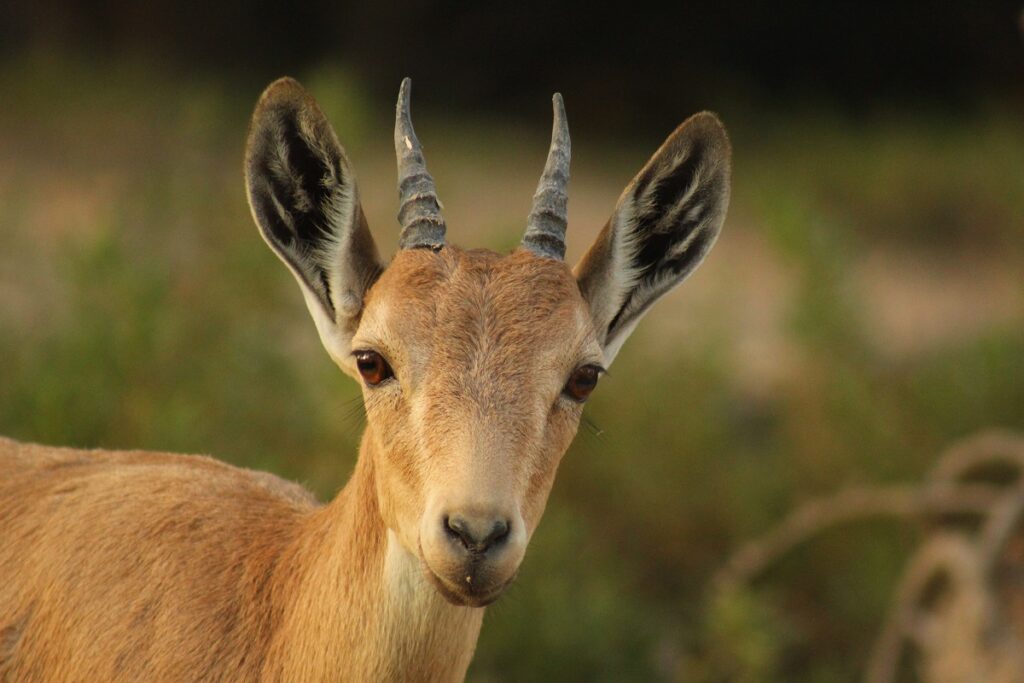
Or you choose to concentrate on some of their most stunning features… Will you look at these gorgeous ears! And what about their socks, their horns (big or small), their beards, their little tail… One has to admit, everything about them is elegance.
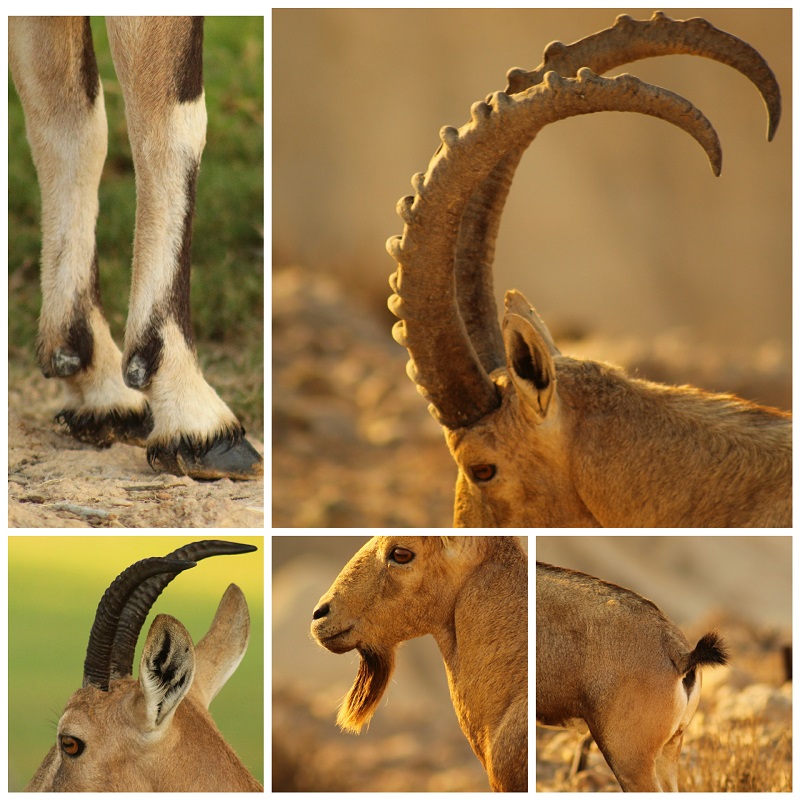
But be careful, they are still wild animals
On the other hand, they have become so used to our proximity that they don’t see us anymore and certainly have no fear. They are making serious damages to our gardens and it is probably just a matter of time until a small child falls victim to their horns.
Therefore, one will never stress enough how important it is not to try to approach them or feed them for your own security. For their security, it is also important not to litter as they will grab and try and eat every plastic bag or other garbage left to fly in the wind.
You can find them just about anywhere in the village or around, but their favorite spots are along the cliff and in Ben Gurion’s park (right behind David and Paula Ben Gurion’s grave).
You won’t have to observe them for very long to be able to capture some of their most usual poses:
1. Eating
They feed of low calorie grass and plants and therefore spend most of their day looking for food.
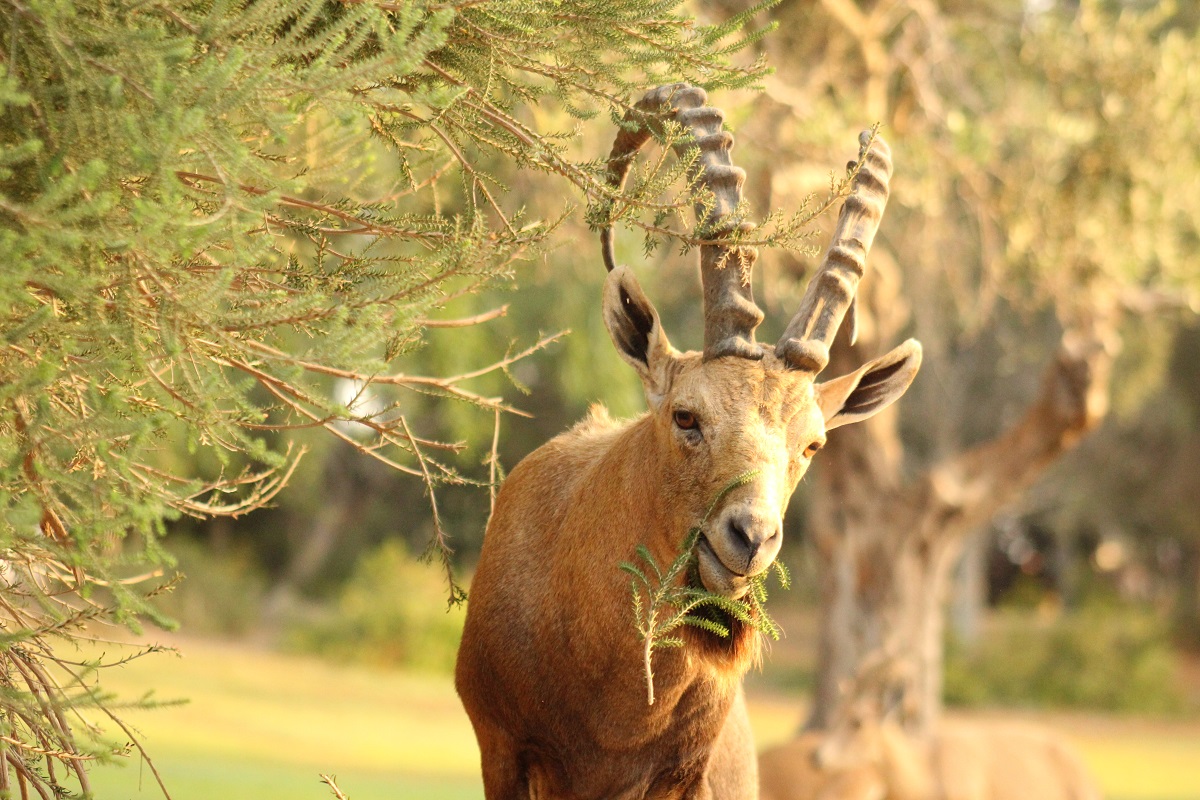
Once they’ve had enough grazing on grass and low bushes, they will look for new and higher horizons
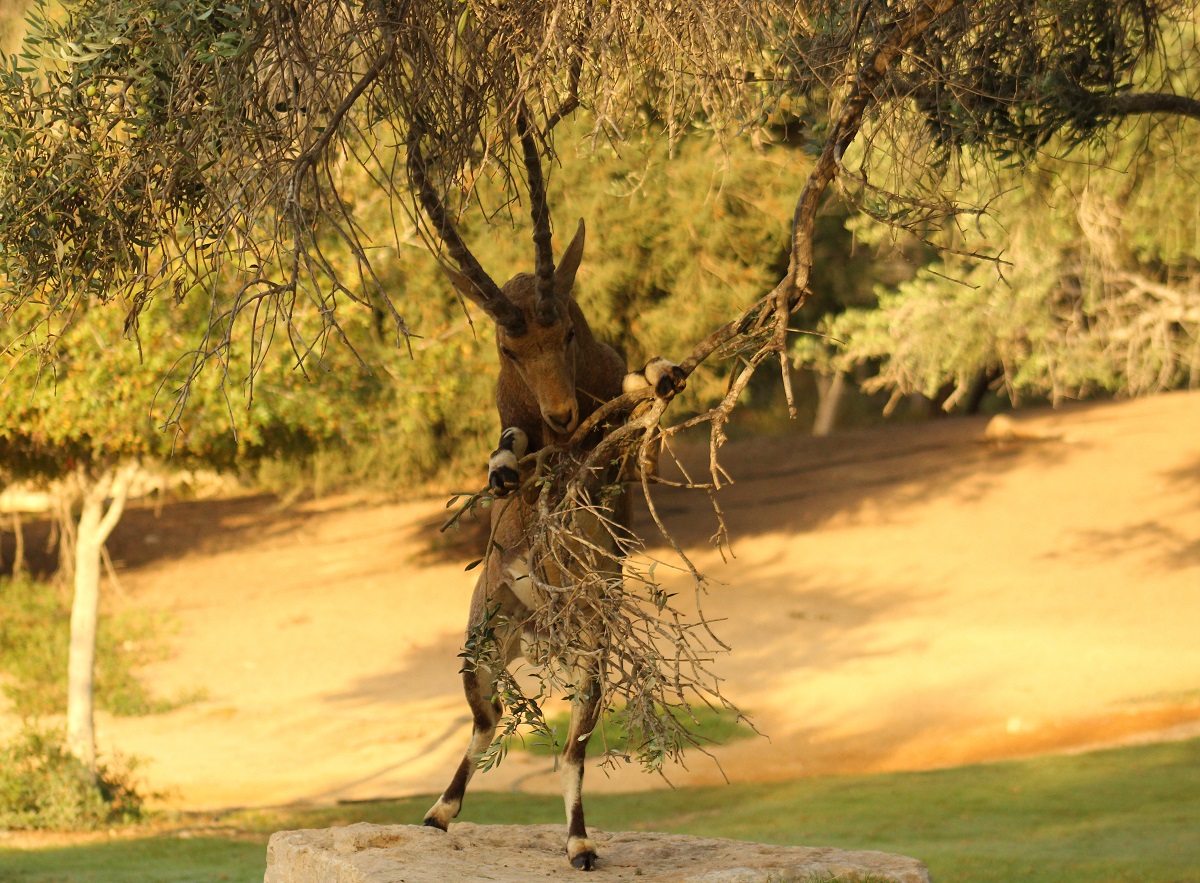
Those who are too short to reach a branch from the ground will graceful climb onto a tree. They can jump up to 1,80 m. without any momentum. They can even reach very high leaves by climbing first onto a wall and then on a high tree).
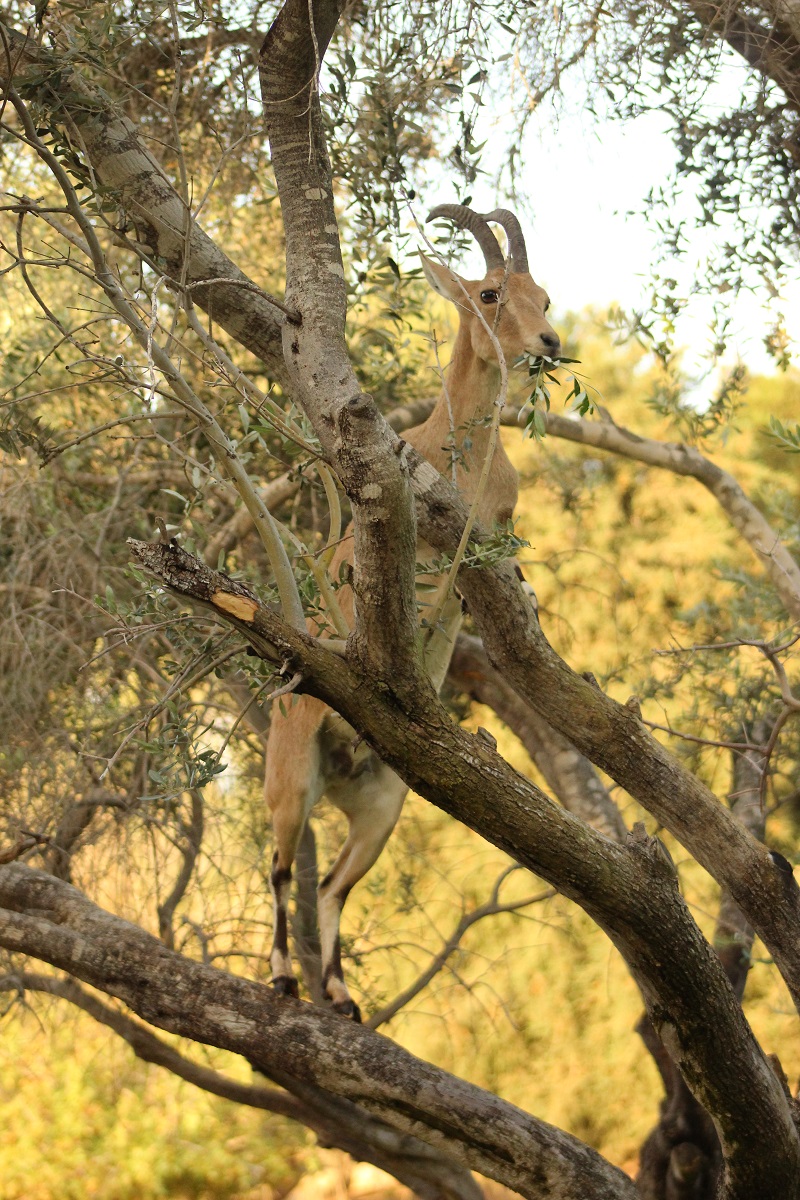
Could it be that from the bottom of the tree, they don’t have a clue on what they are going to find on top of it? As clearly, this little one didn’t make the most judicious choice…
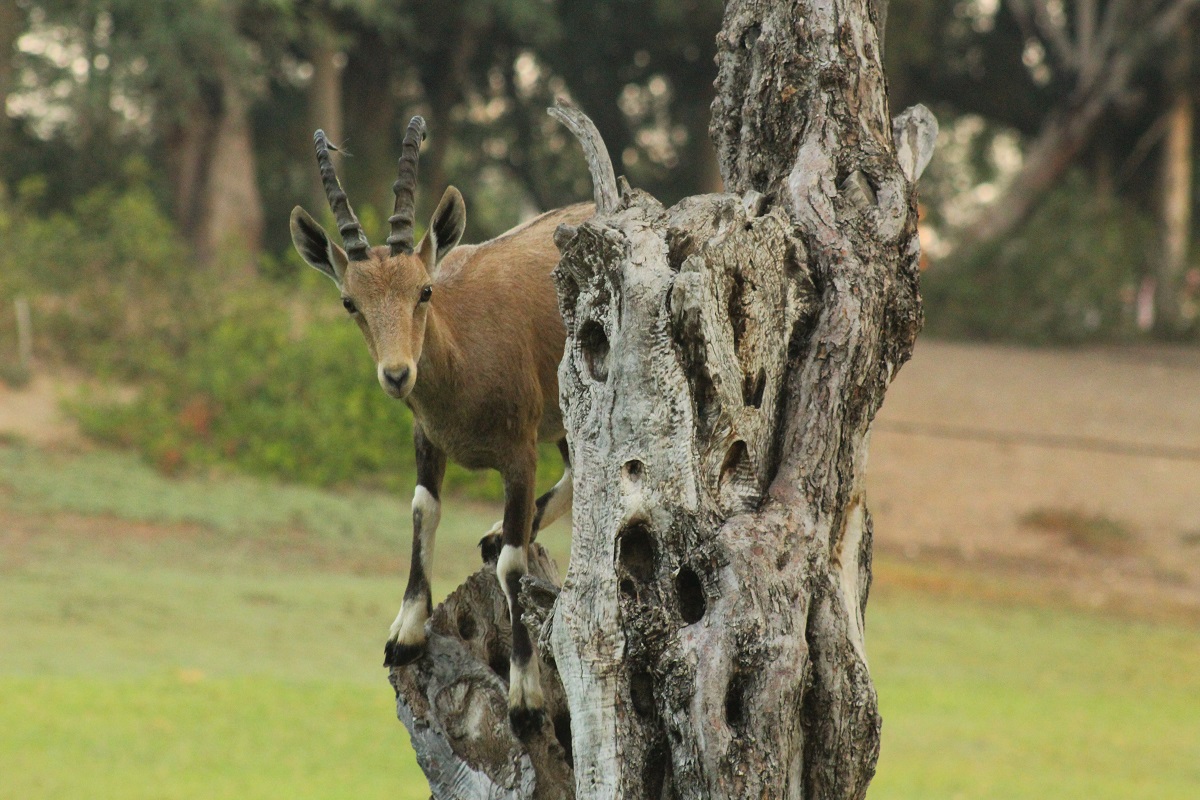
But maybe he did find something to eat after all…
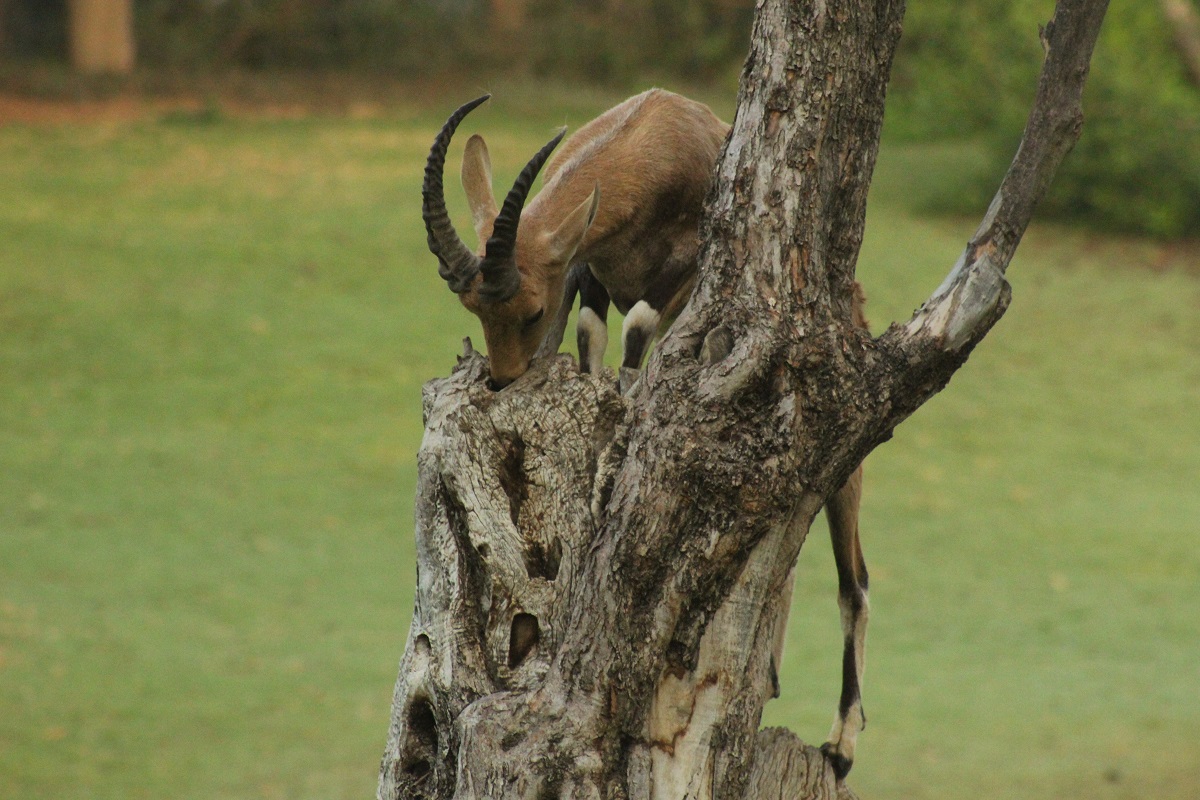
He certainly tried to look up for something more interesting…
Before quickly jumping down slightly miffed.
2. Staring
The ibex will also spend long hours peacefully staring, without the slightest move. You just have to approach with a camera for them to strike a pose, looking directly in your direction.
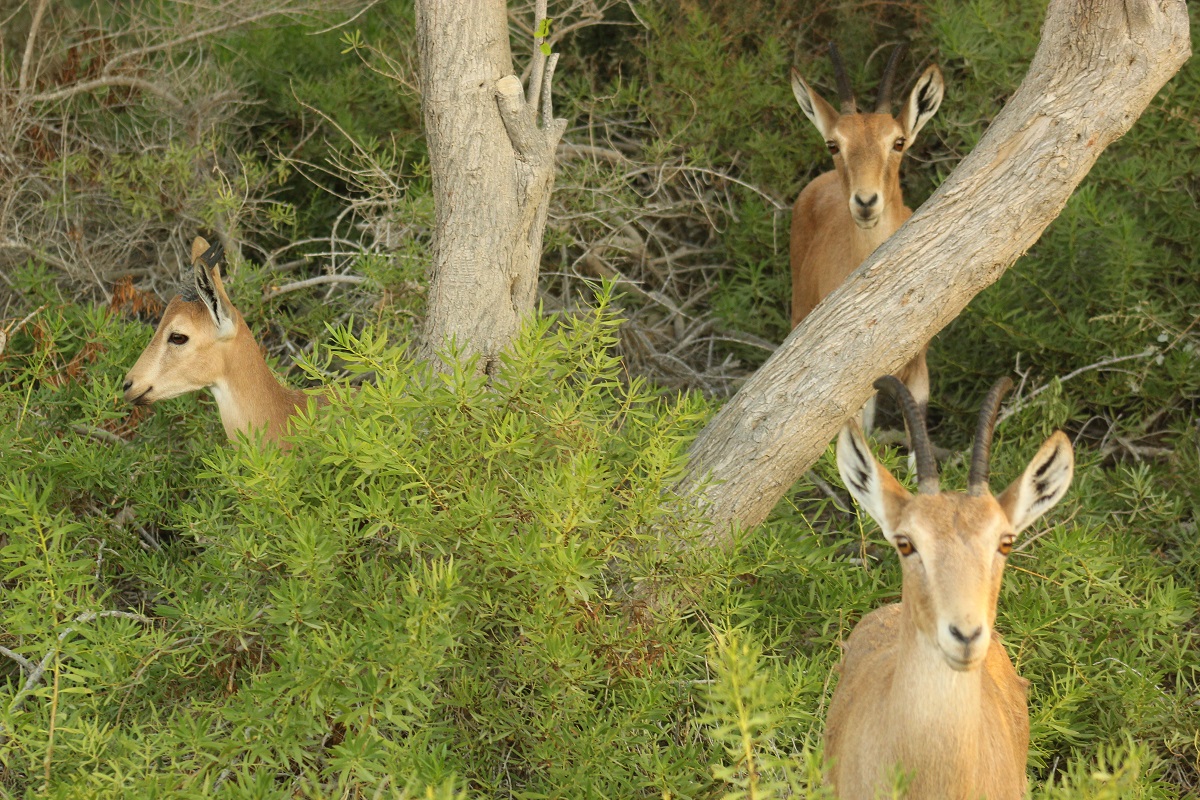 Other times, they are just leisurely staring at the landscape.
Other times, they are just leisurely staring at the landscape.
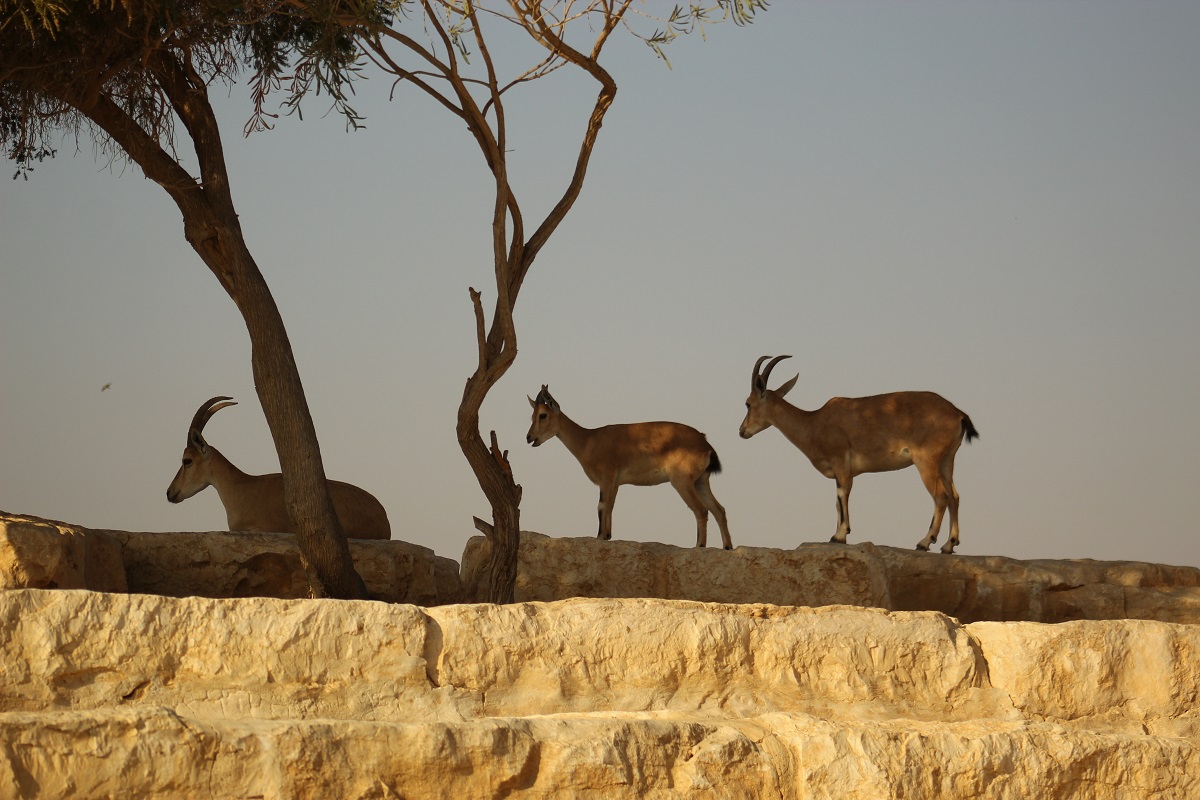 Mostly, it is all very peaceful.
Mostly, it is all very peaceful.
But given the speed at which they all rushed to the edge of the cliff the instant the sun started to come up, I could have swear they all came rushing to watch the sun rise.
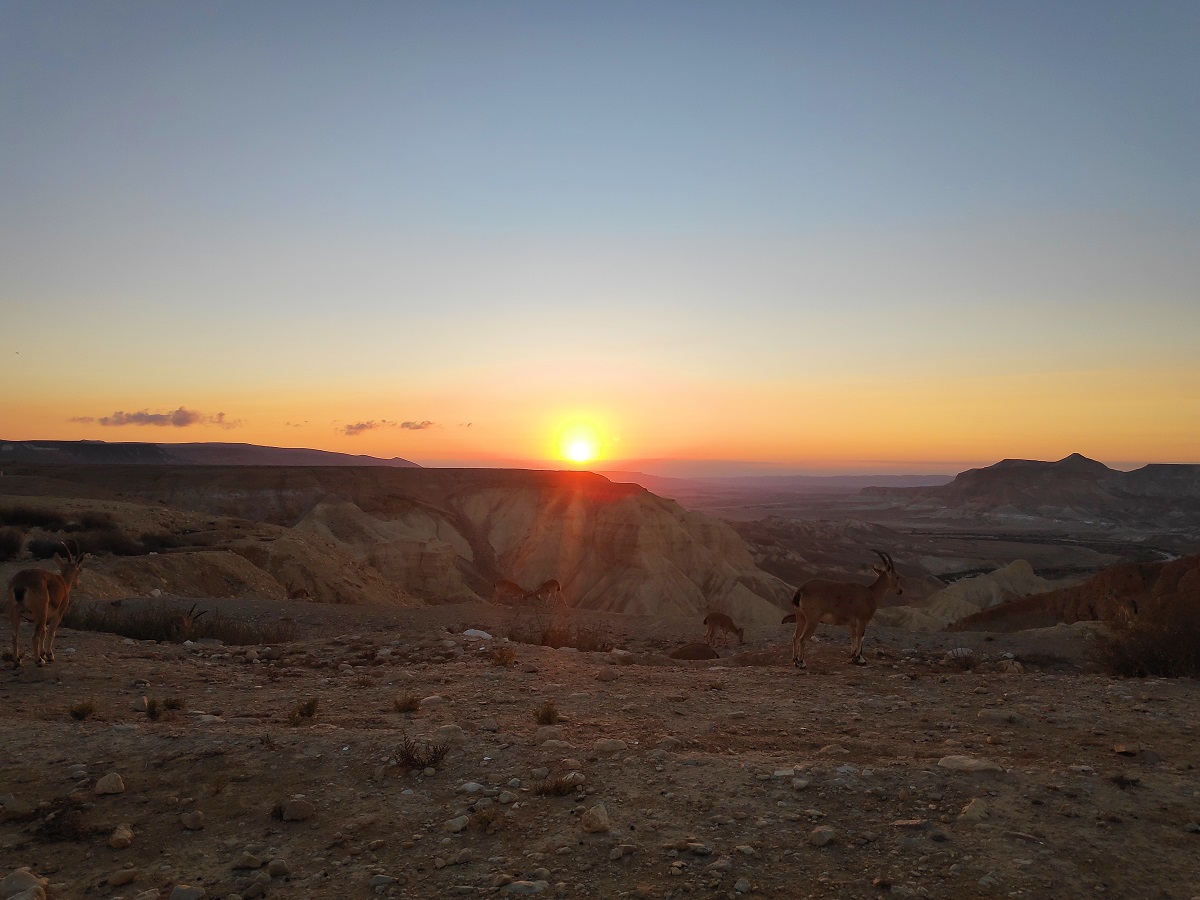
3. Scratching
From time to time, the staring will be disrupted by some movement. I know, it is not much in terms of action, but I couldn’t help noticing that they do scratch a lot.
Can you see the small patches of disrupted hair on the back of this little one?
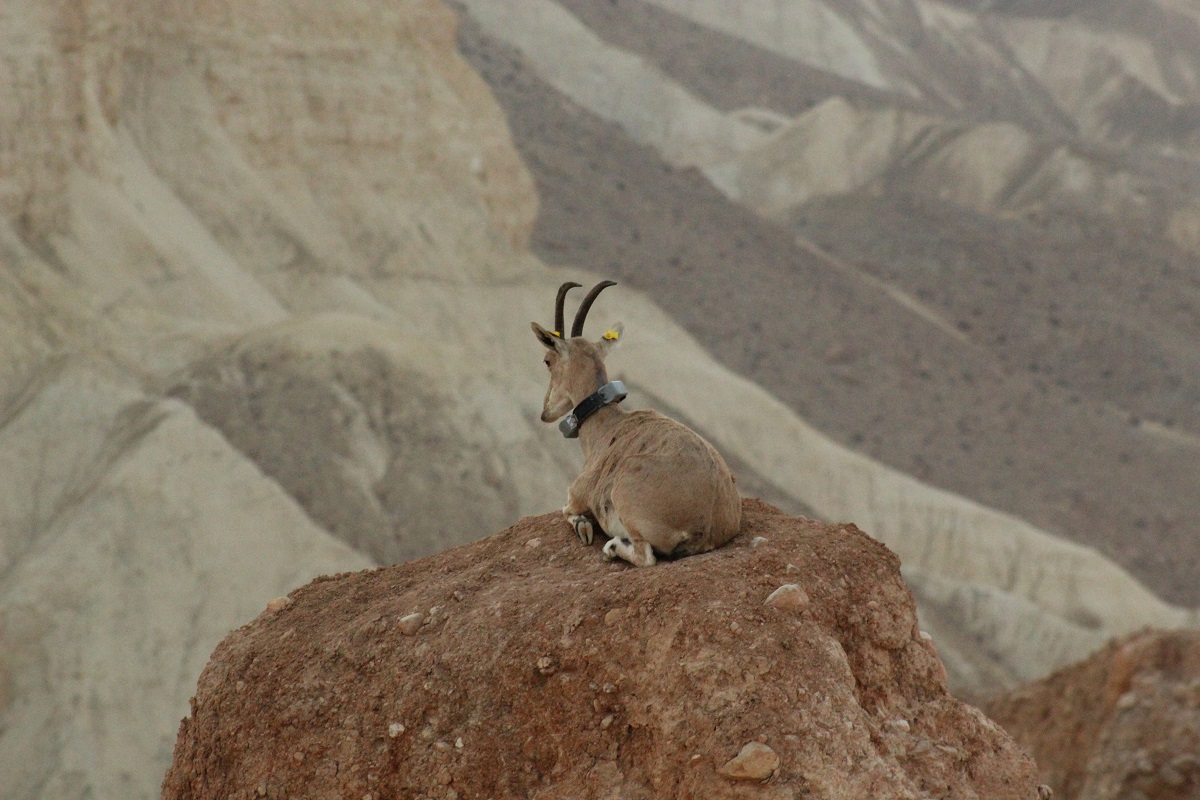
They appear when the ibex uses it’s horns to scratch his back.
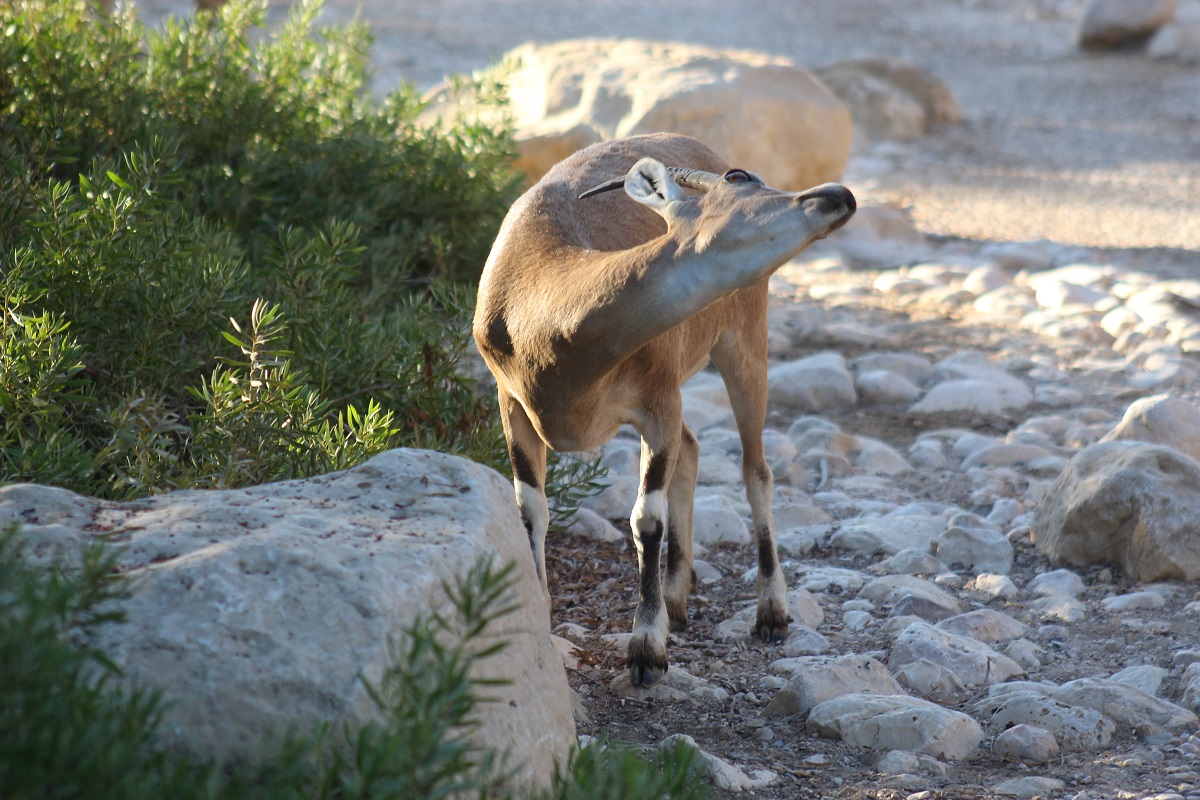
But when something gets itchy, they have more than one trick in their bag and they will use whatever is available to them. Their muzzle, their foot, or any stone or wall…
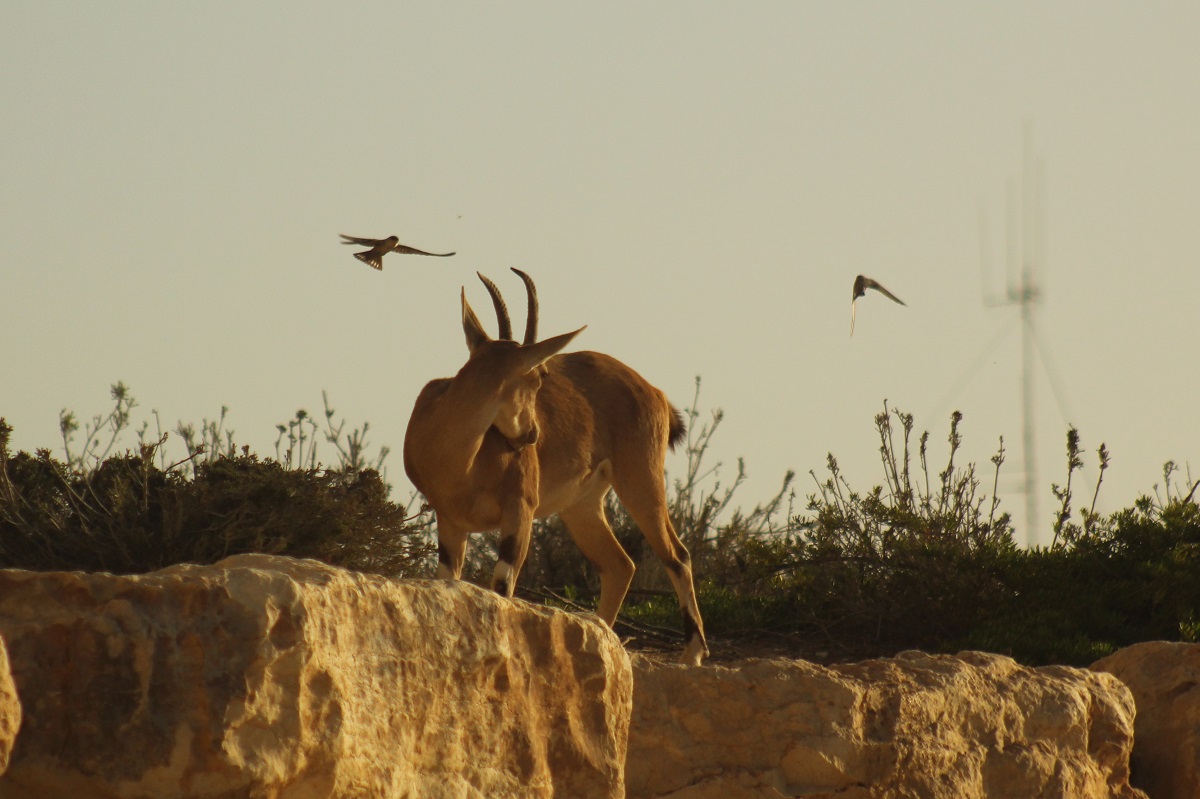
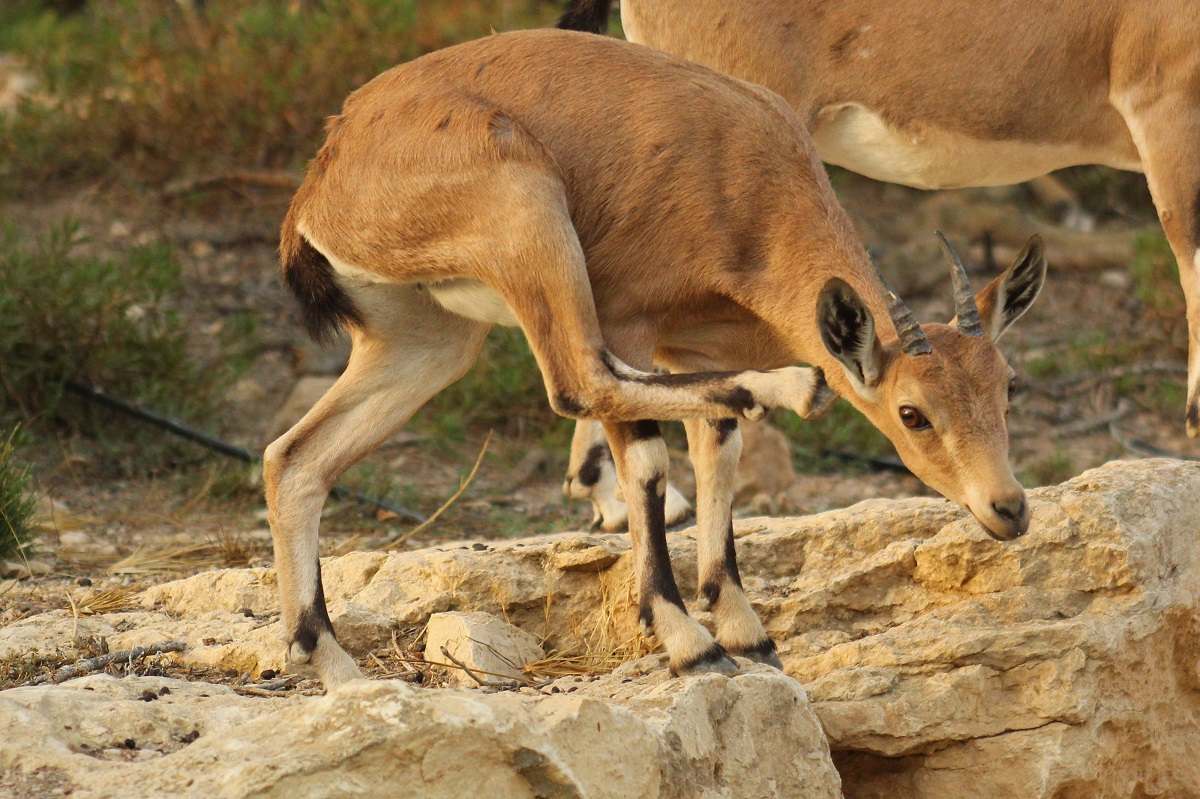
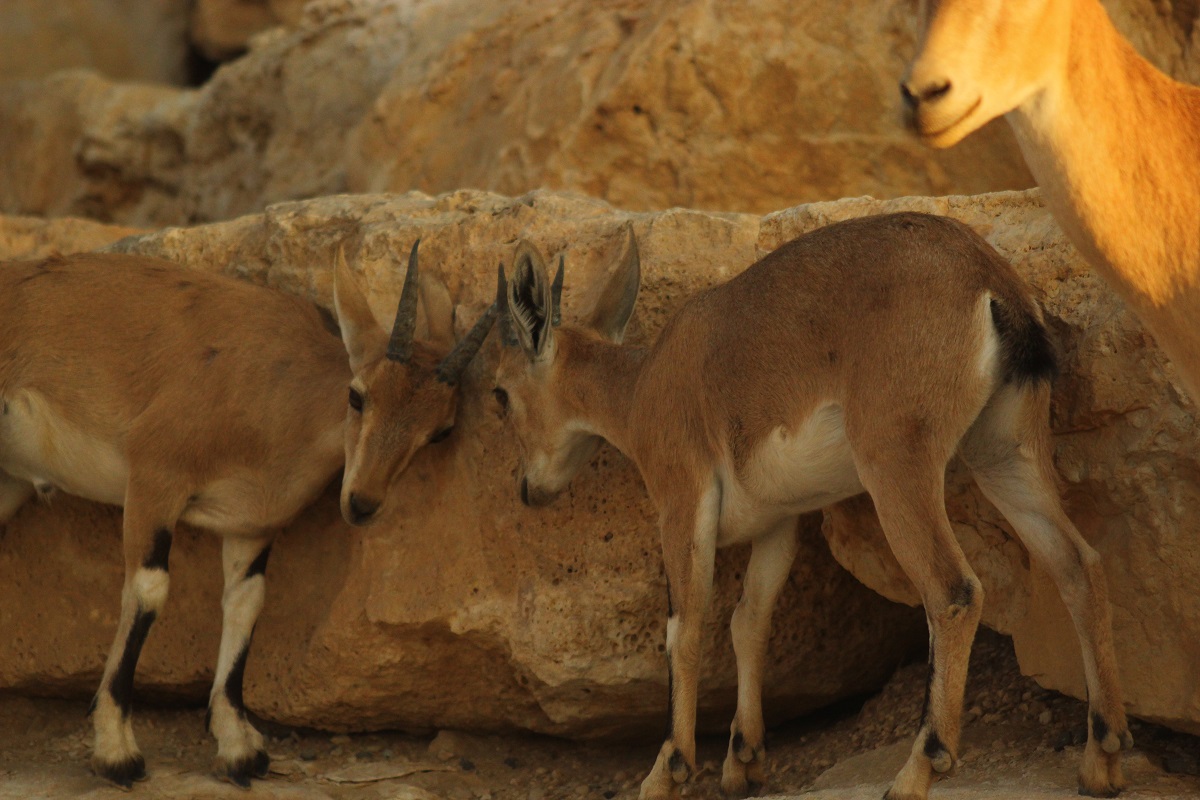
4. Running, jumping up and down
And from time to time, for a brief instant, the peace and quiet will be broken and the ibex will run or jump gracefully.
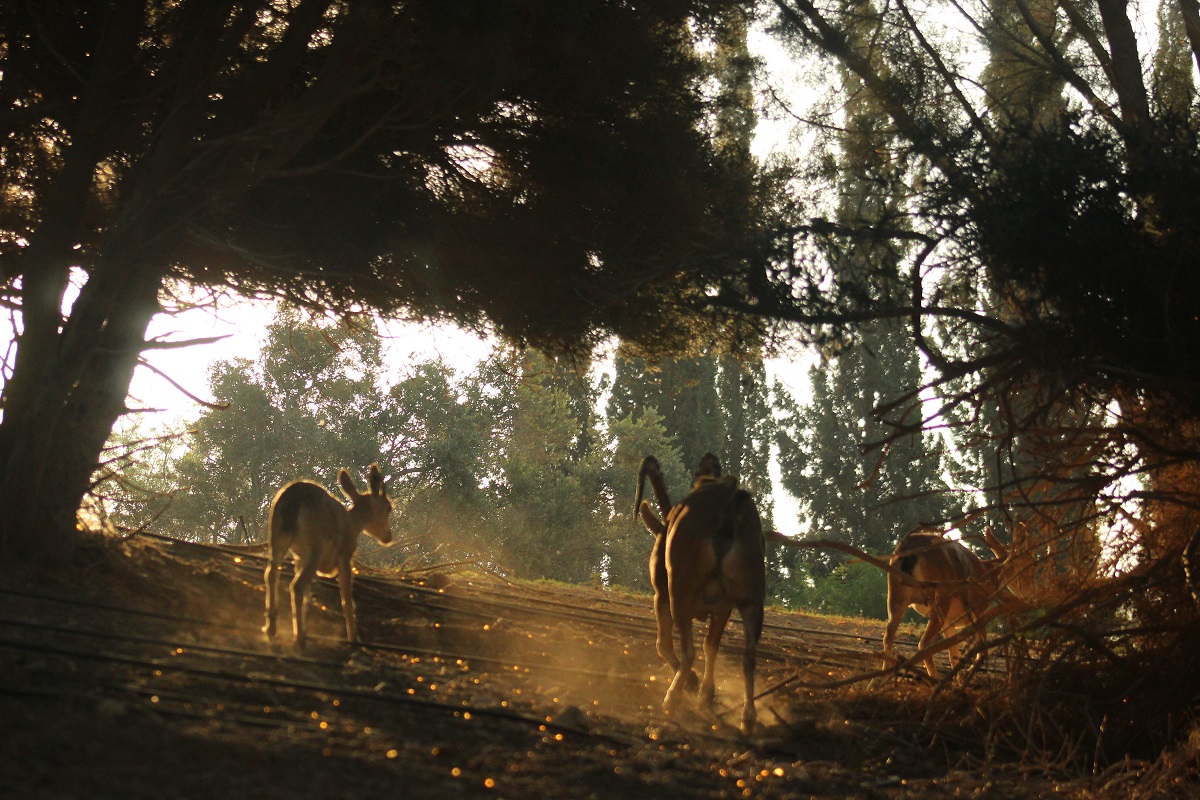
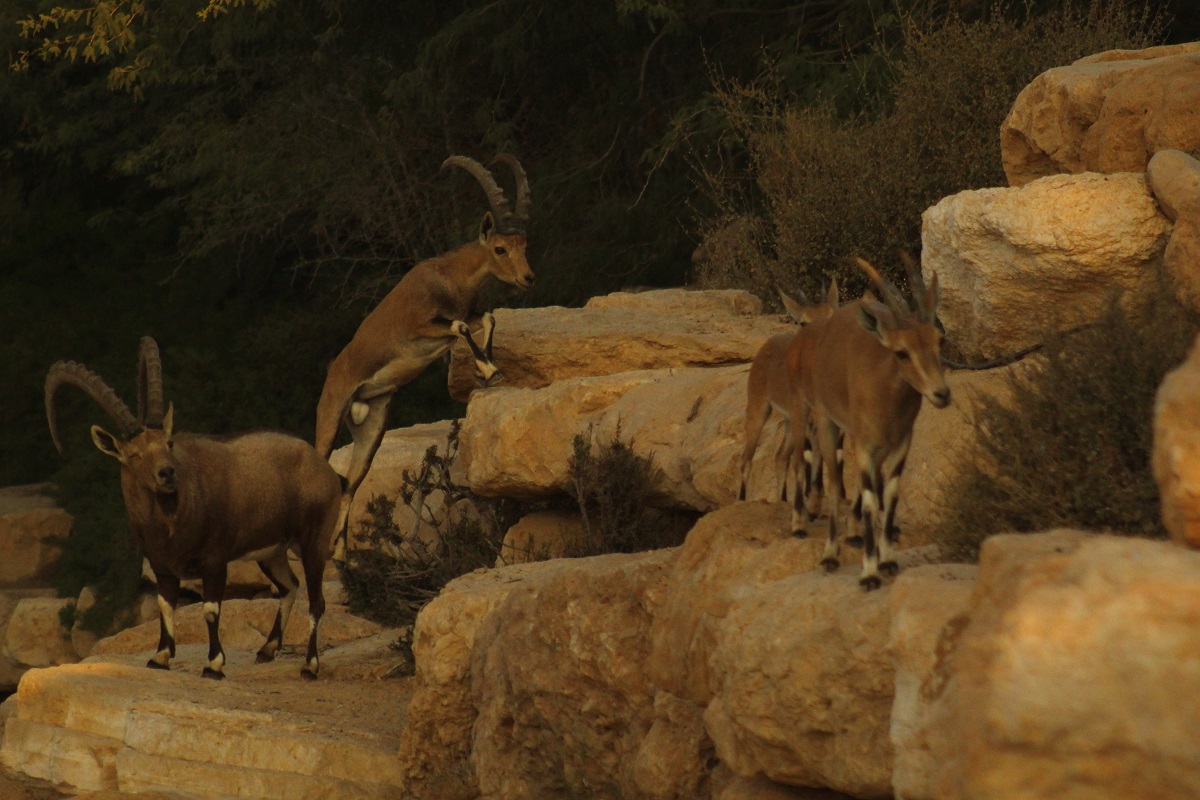
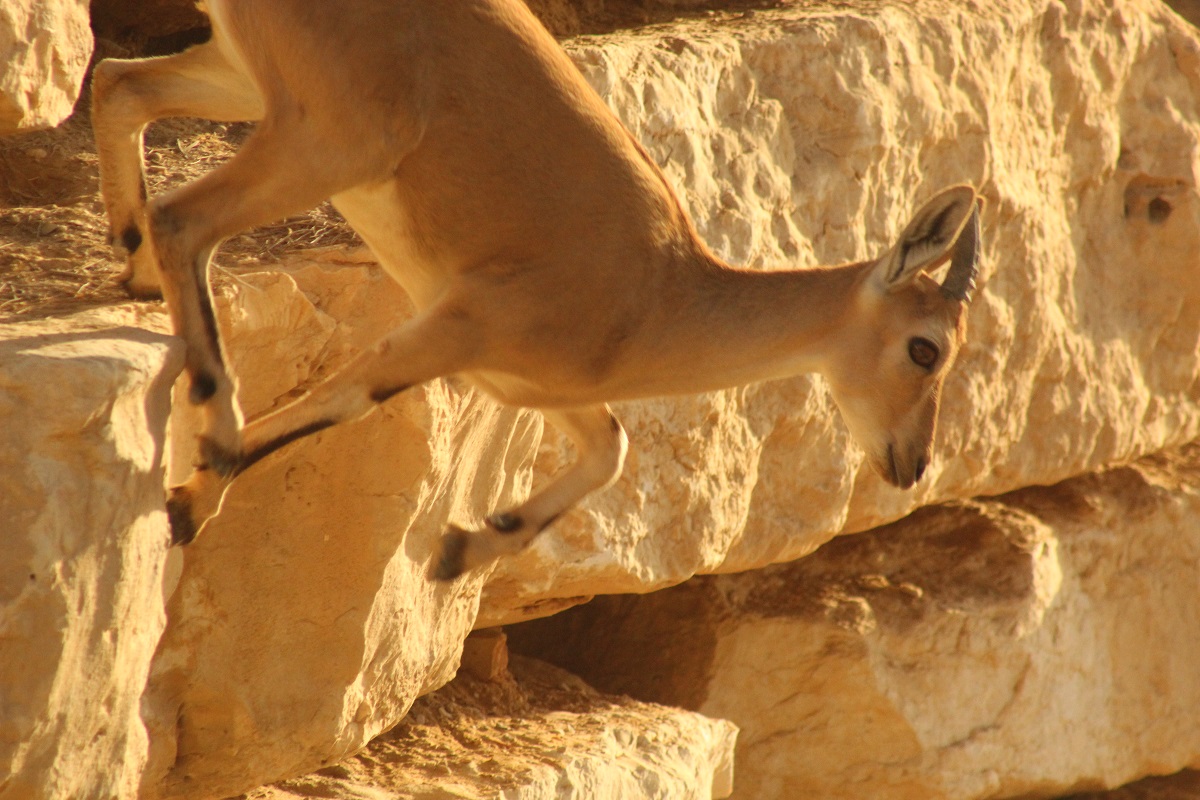
5. Nursing
I was lucky enough to capture this picture in October, but this is a highly unusual sight at this time of the year as the kids are already quite old. The little ones being born mostly during the spring (around April), it is more usual to witness an ibex nursing in the late spring/ early summer.
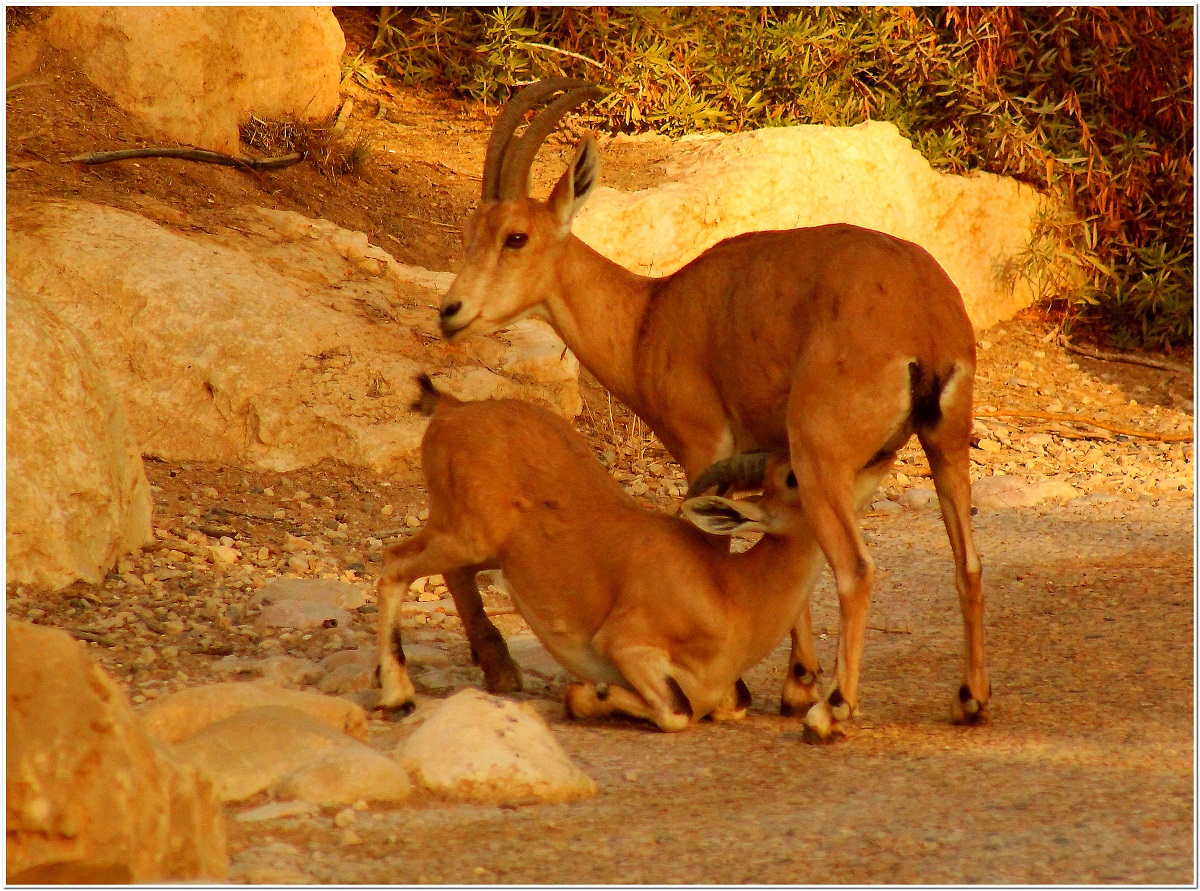
5. Playing
The kids, mainly, are extremely playful.
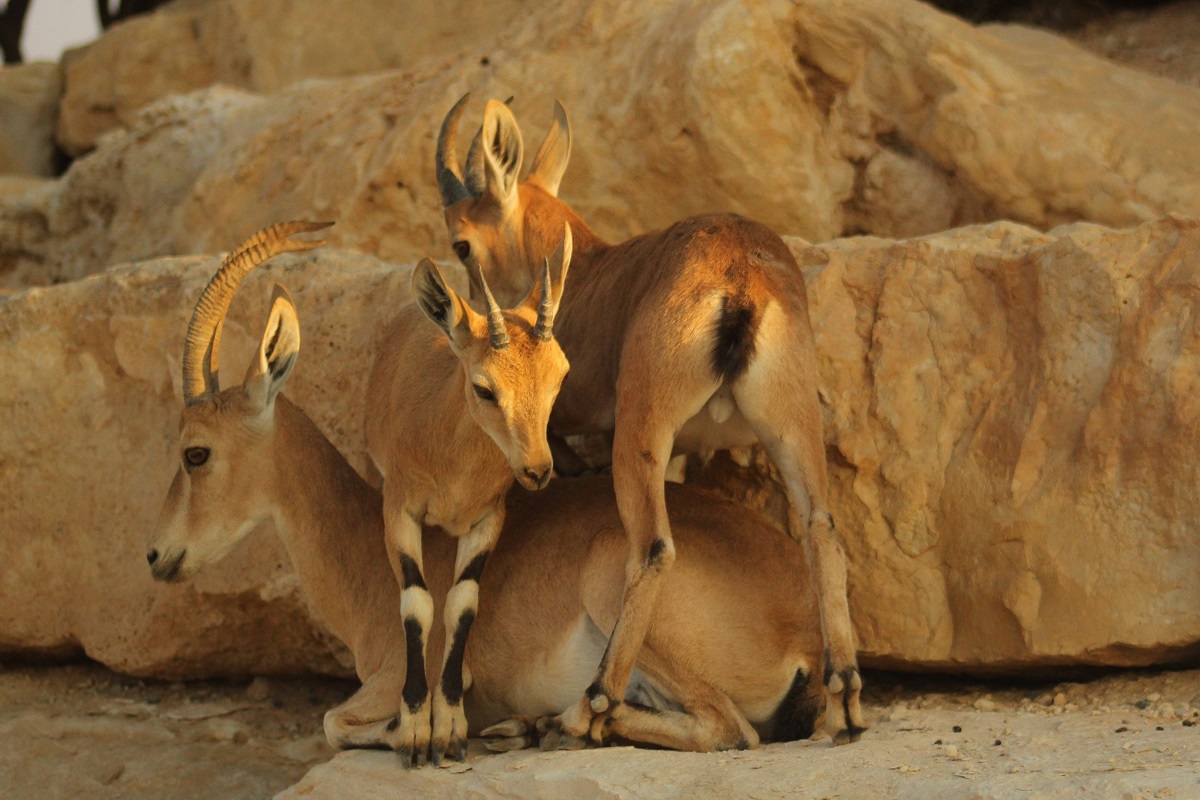
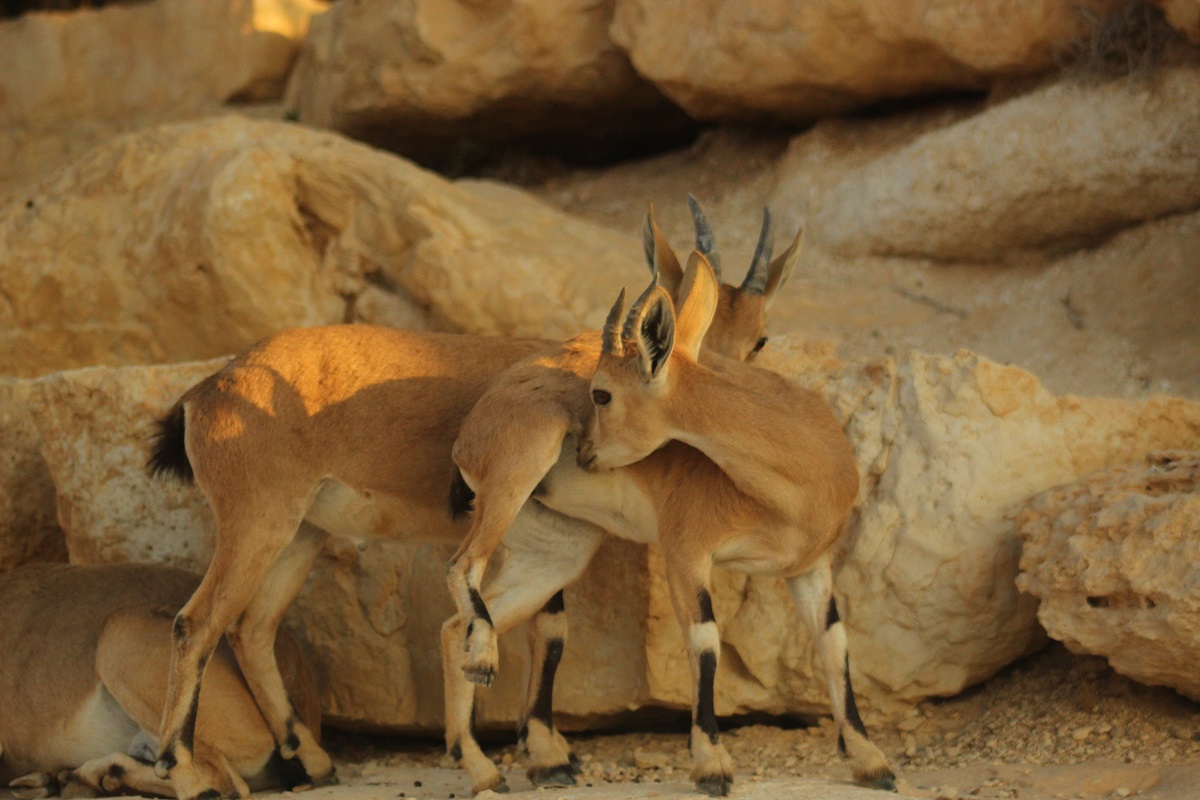
6. Fighting
Play fighting
Most of the year round, the fighting could very well enter into the category of play time. Two male ibex, young or old will suddenly and for no apparent reason begin a feud, which involves strokes of the horns and standing up for intimidation (often, only one of the two fighters will bother).
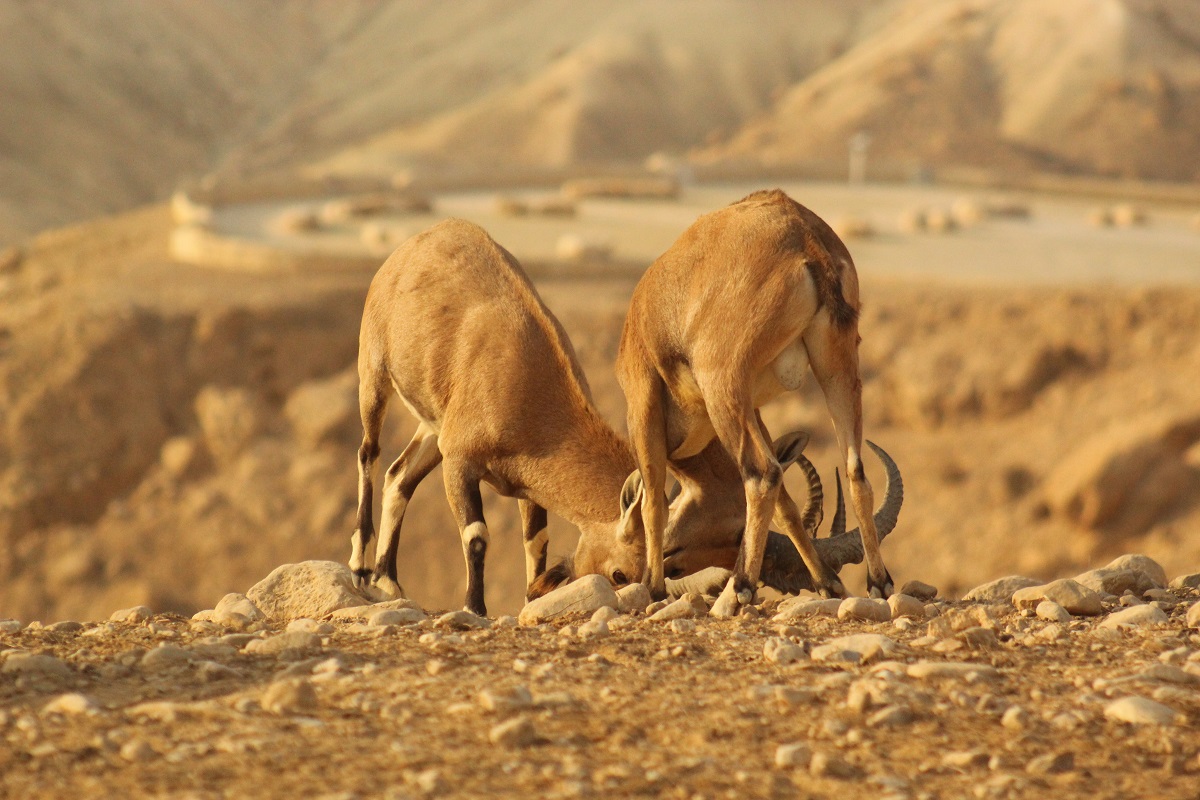
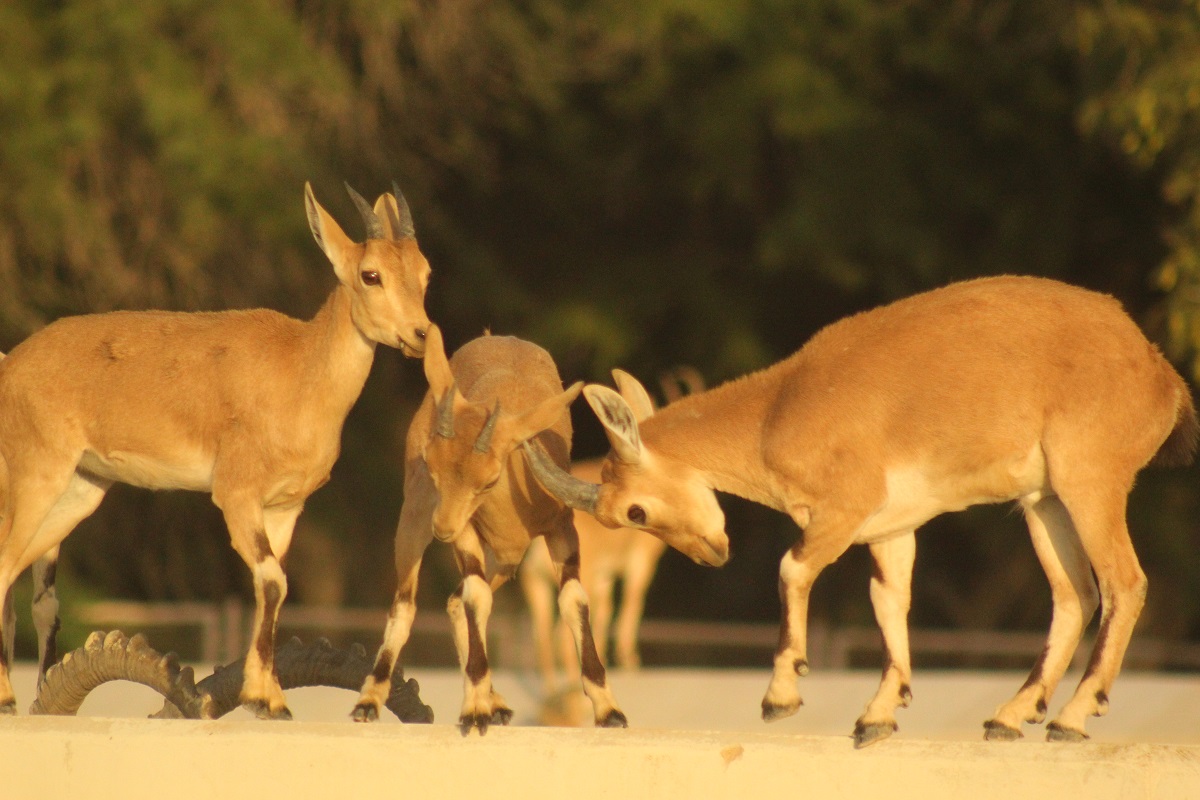
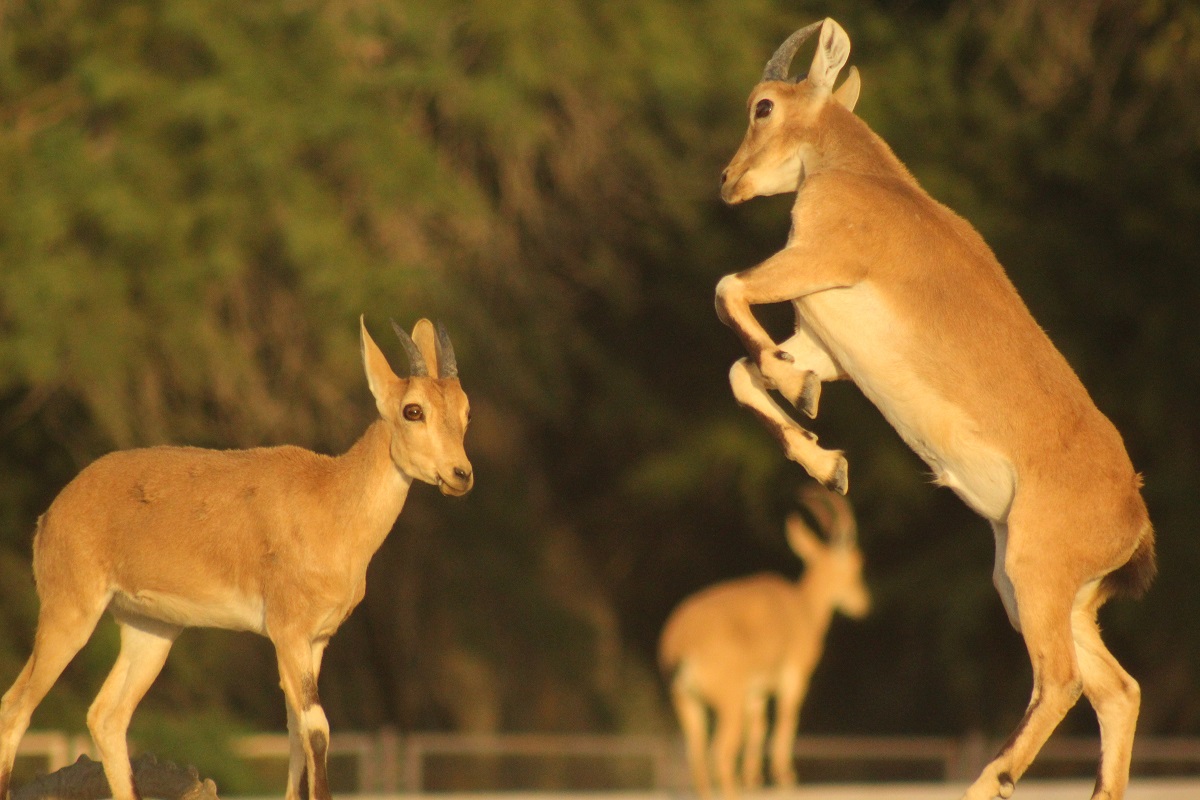
The rest of the herd will be eating, staring in another direction, mostly ignoring the battle.
Real fighting
But when comes the mating season, real fighting takes place. This is how they determine the identity of the dominant male, the one about to get lucky.
And you just can’t compare a play fight with a real fight. The strokes are violent, they stand up at the same time with an evident flare of competition. Add to the mix some scary intimidation jumps and stares. The fury in the eyes is palpable. You can almost picture an imaginary trickle of fumes coming out of their nostrils.
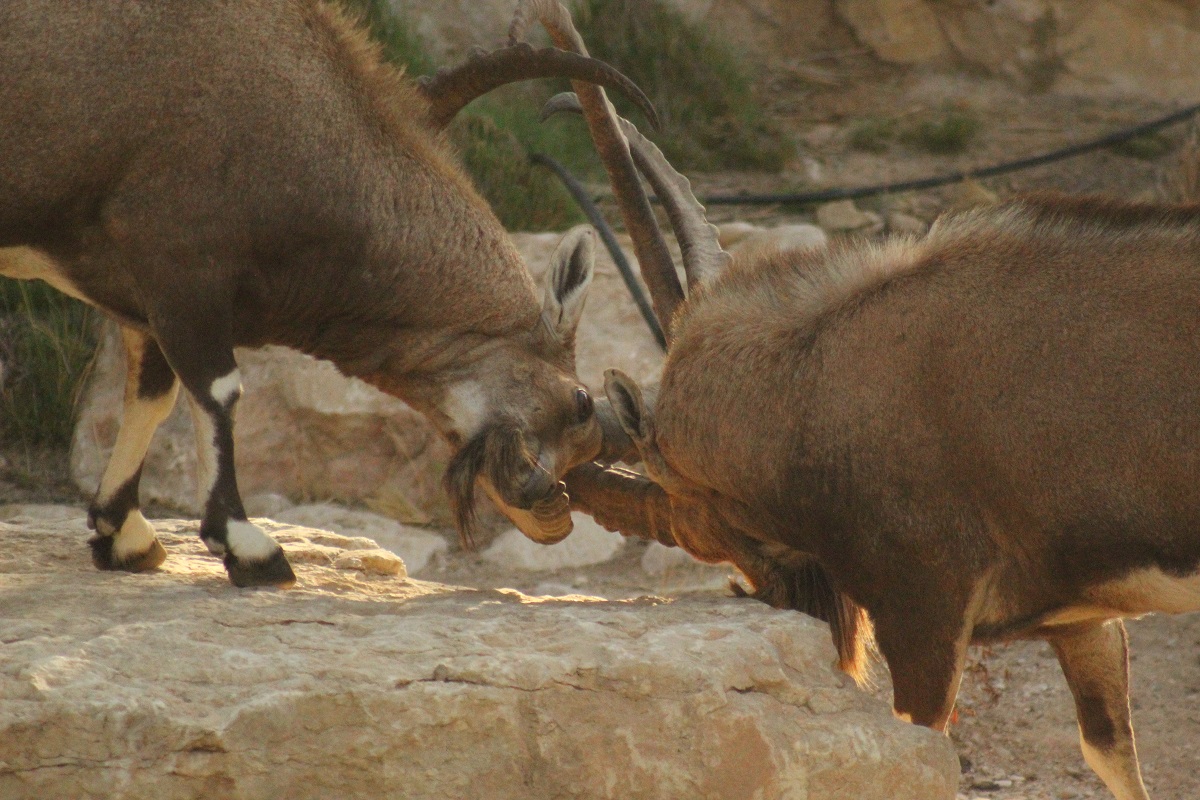
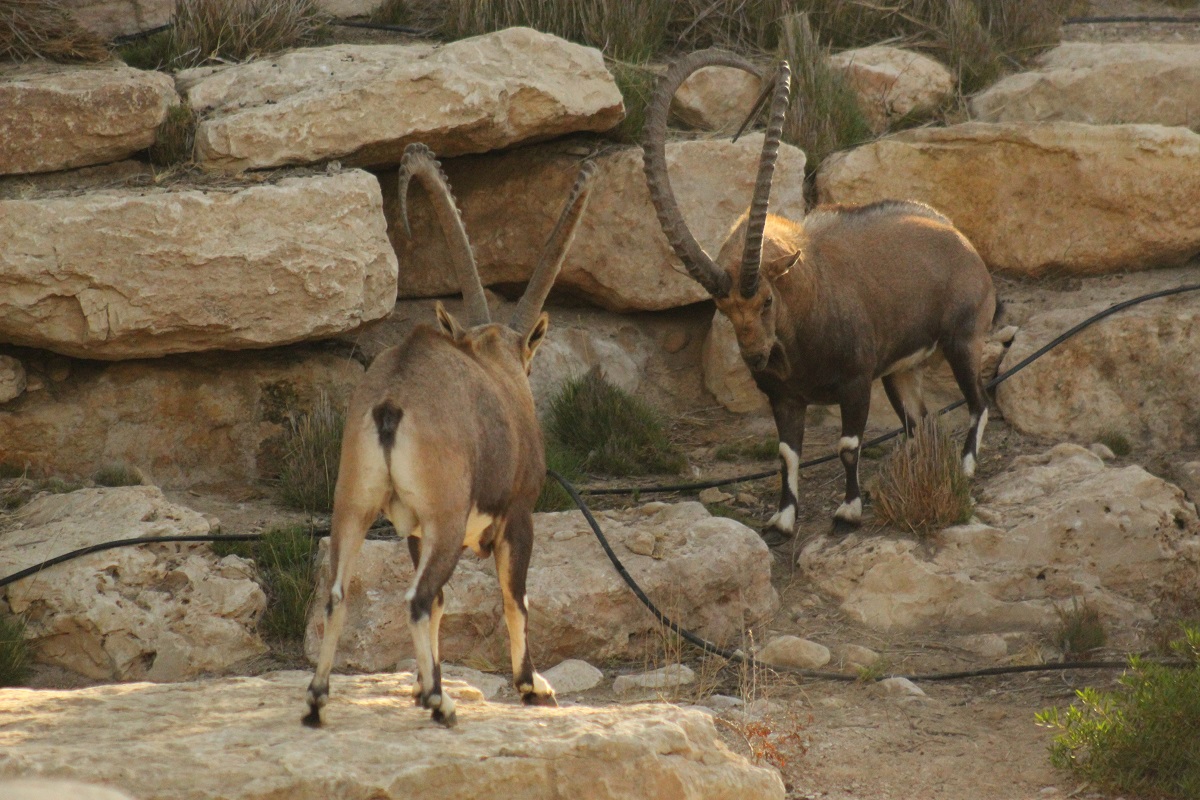
Group fighting
A few days ago, I witnessed something else completely. I saw a group of 6 males in fighting mode.
The group was isolated from the rest of the herd. At most, a group of three would enter the ring while the three others patiently waited for their turn. One would then give up his place and be replaced by a fourth one and so on. At other times, they would divide in three groups and go for a one on one combat.
But it was all very calm and civilized. Like some kind of exercise or rehearsal.
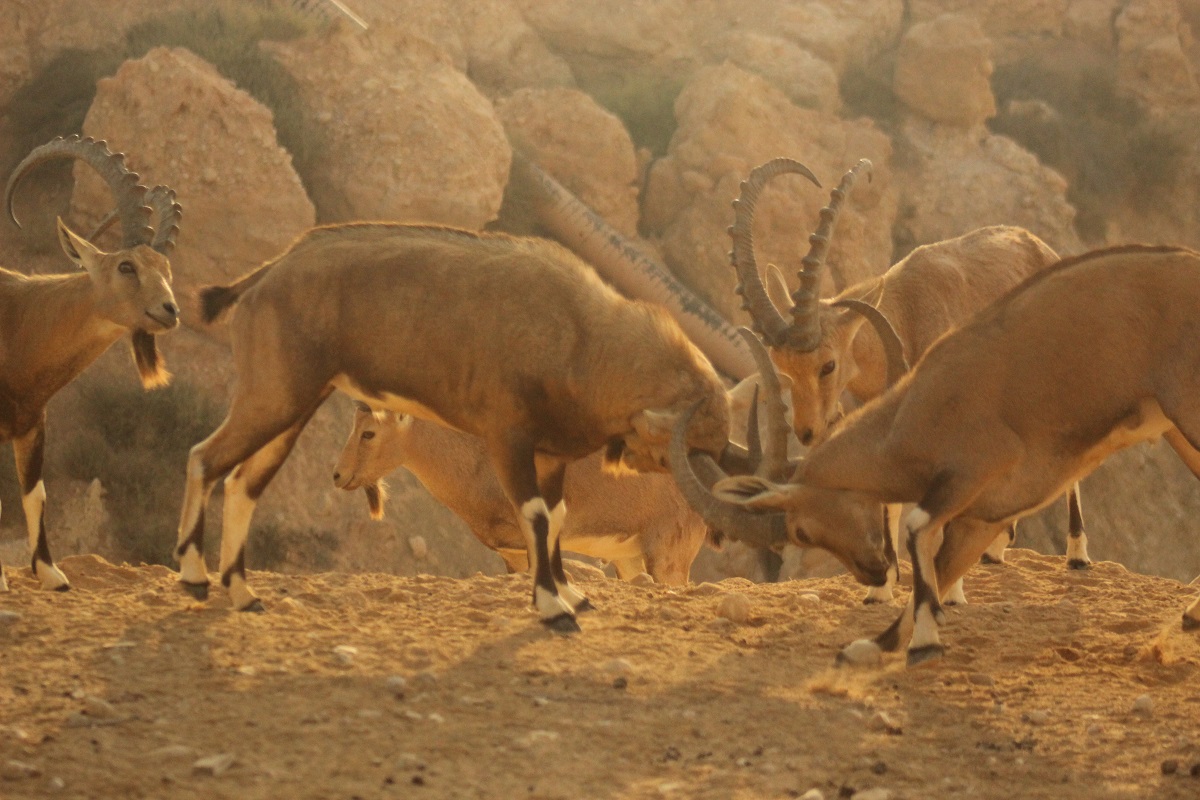
Someone suggested it could have been young ibex training for the big fight that would take place later.
7. Mating
Beware, you might want to keep children away from the rest of this post as this is real nature pornography. A moment worthy of a David Attenborough documentary. If you’ve enjoyed the seduction dance of the birds of paradise, you are going to love what is coming.
It’s mating season!
In the last few weeks, there has been quite a lot of butt snuffling in the area.
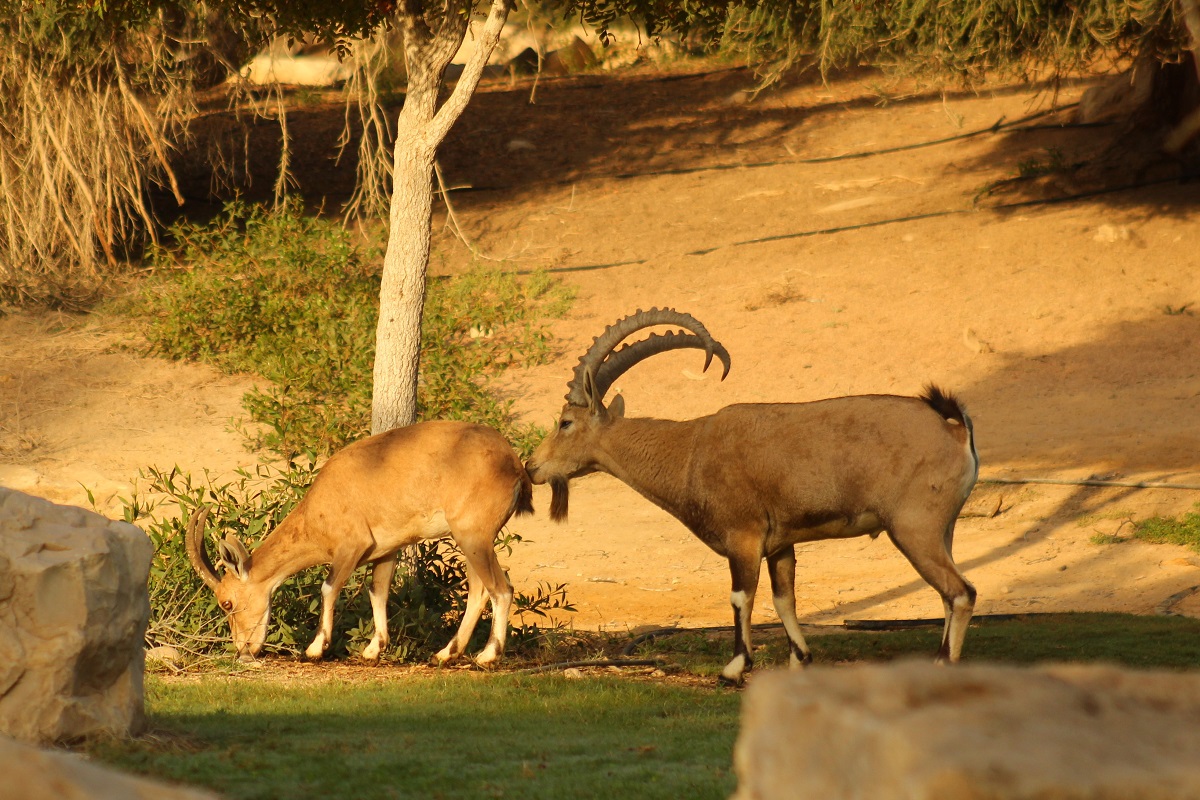
A quick look at the entry for Nubian ibex in Wikipedia and my suspicions were confirmed: kids are born in April, gestation lasts for 6 months… Make the calculation… And here we are, it is definitely mating season. Turns out it has a name, it is called the rut!
Attention please, these pictures are quite rare
I will be honest with you, I have apparently been very lucky and there is almost no chance you will witness the mating of two ibex when you come and visit. My dear zoologist friend Dr Haim Berger, told me that to the best of his knowledge, there are very few mating pictures. This is why despite the low quality of my pictures (It was at dawn, still quite dark and I didn’t have a tripod, I just couldn’t get my camera to focus), I have decided to post them anyway.
Hoping to be able to catch them one more time – but this time better prepared – I have been waking up at the crack of dawn for the past three weeks in the hope to catch them again, but to no avail. Now that I have realized how lucky I had been, I have given up trying to do better (for this year!).
The approach
In ibexland, when a male is interested, he begins by sticking his tongue out

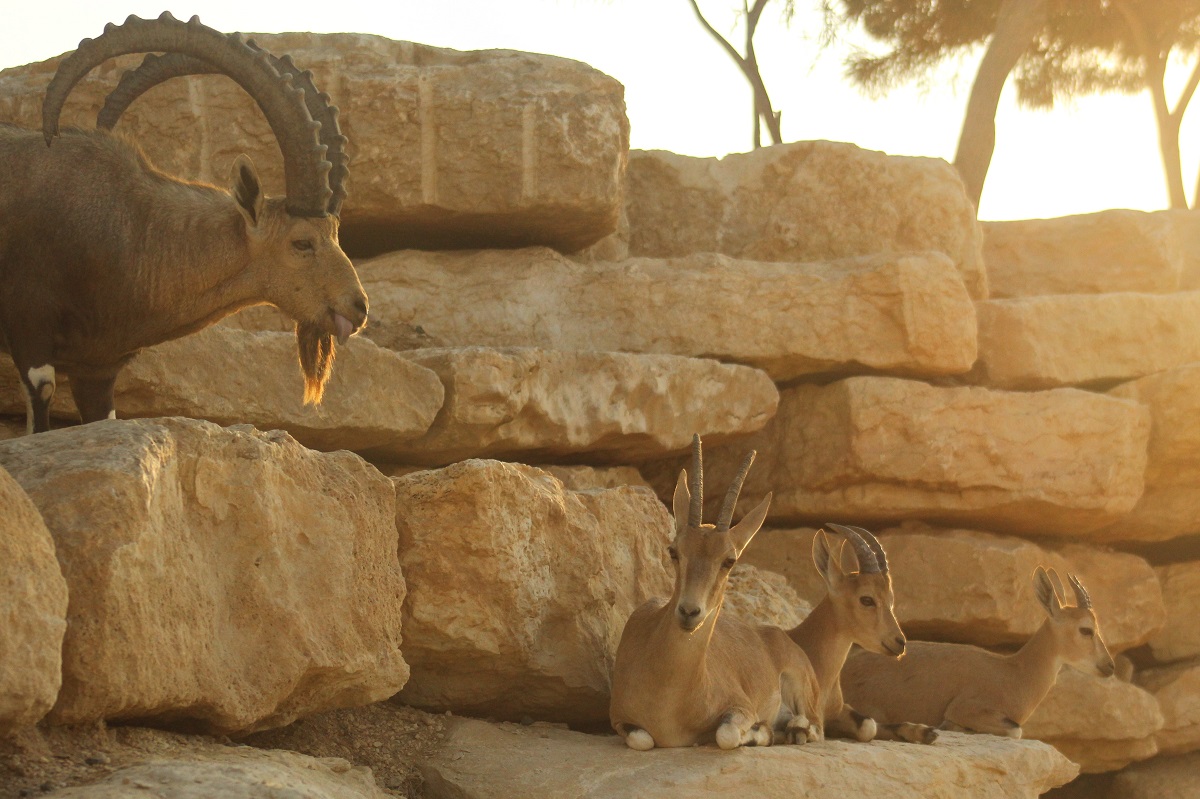
Full disclosure, I have captured this tongue wagging completely unwittingly.
In fact, I only realized the males had their tongue out once I looked at the pictures on a big computer screen. Even if I had noticed their tongue was sticking out, I would not have known the signification. This just goes to show that this has been happening a lot lately!
I personally find it scarier than sexy but this is probably because I am not an ibex.
Apparently, at the same time, his beard exudes some scent that the female finds most enticing.
He will then approach a female and sniff her butt

(I would imagine he wants to make sure it is the right timing and he is not wasting his precious time – As I read that between all the fighting and the courting, the male has very little time left to eat and it takes a real toll on his health).
In most cases, she will show her lack of interest by simply walking away (oh yes, lots of headaches in ibexland!). Or, I read, she might choose to show her disapproval by peeing, undoubtfully a very clear sign you are not into it. I haven’t witnessed it (yet!).
The courtship
If she stays put, it means she is interested. Then begins a slow dance of seduction which can last several minutes. The male turns around the female. The female also turns around the male, maybe to further indicate her readiness.
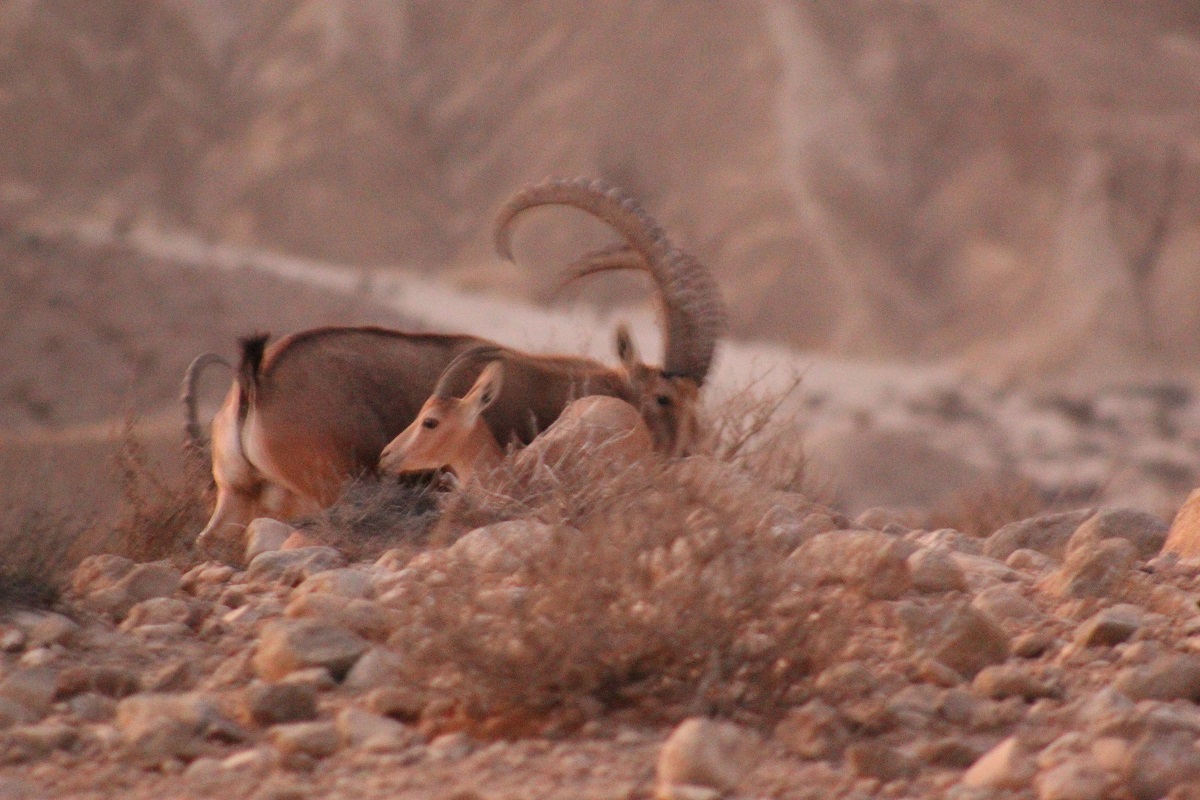
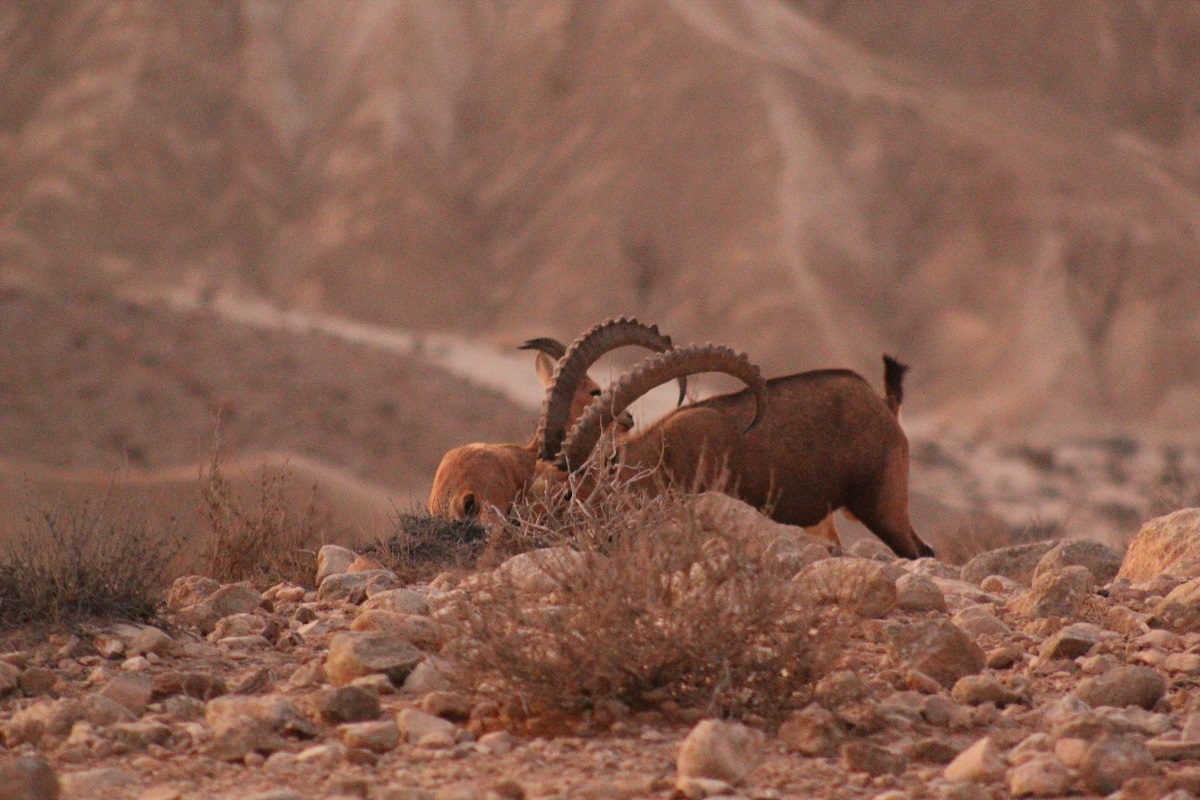
There might be a bit of nose scrubbing in the process (or let’s call it a passionate kiss for the hopeless romantic).
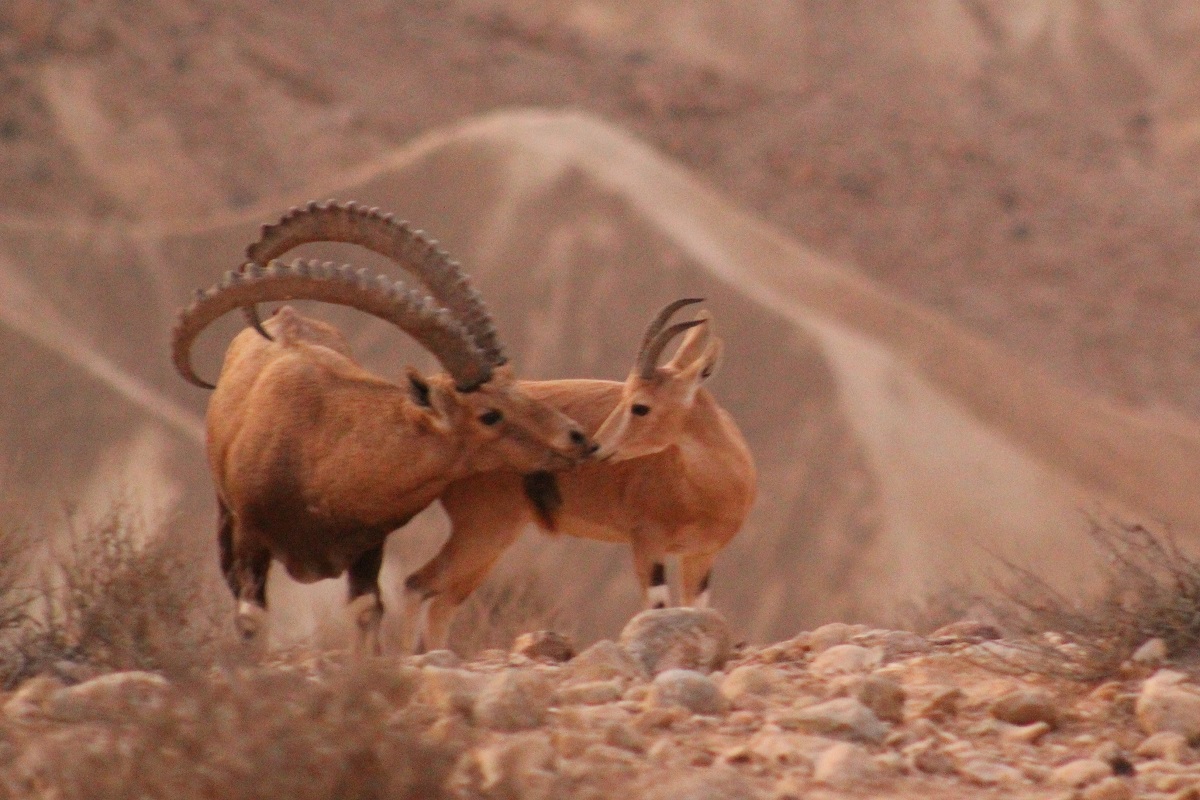
The act
The male will then make it’s move. From what I have seen, the first trial is not always a hit.
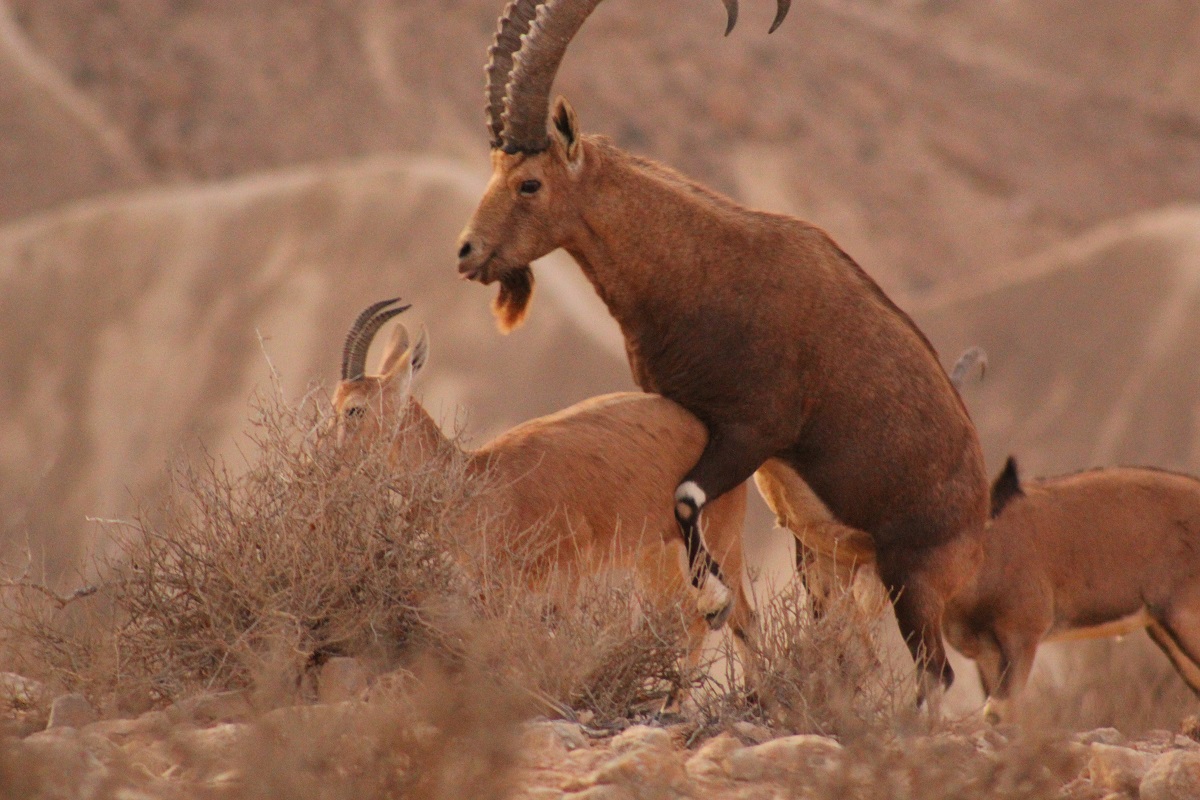
Did he finally manage to do it?
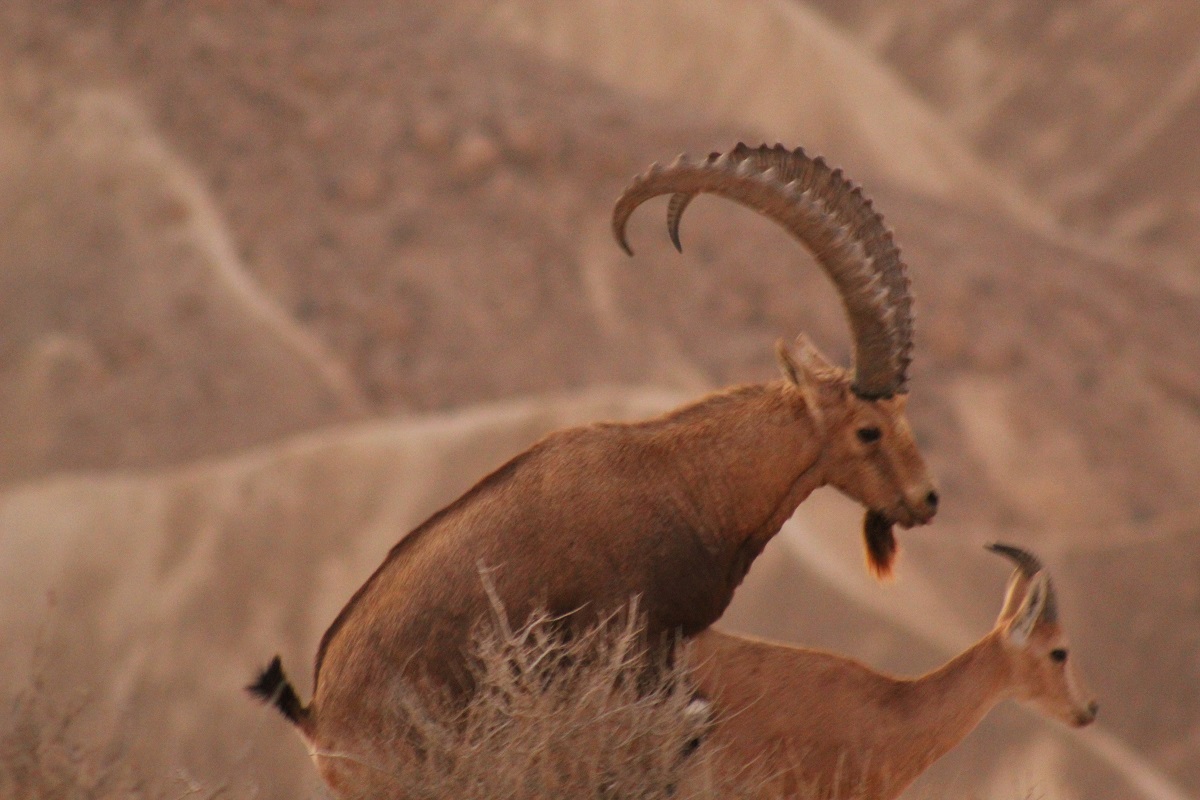
I guess we will never know.
One thing is for sure, it is very quick (a few seconds).
The next day, I managed to bring home the absolute proof that children will always have a tendency to impersonate their parents…
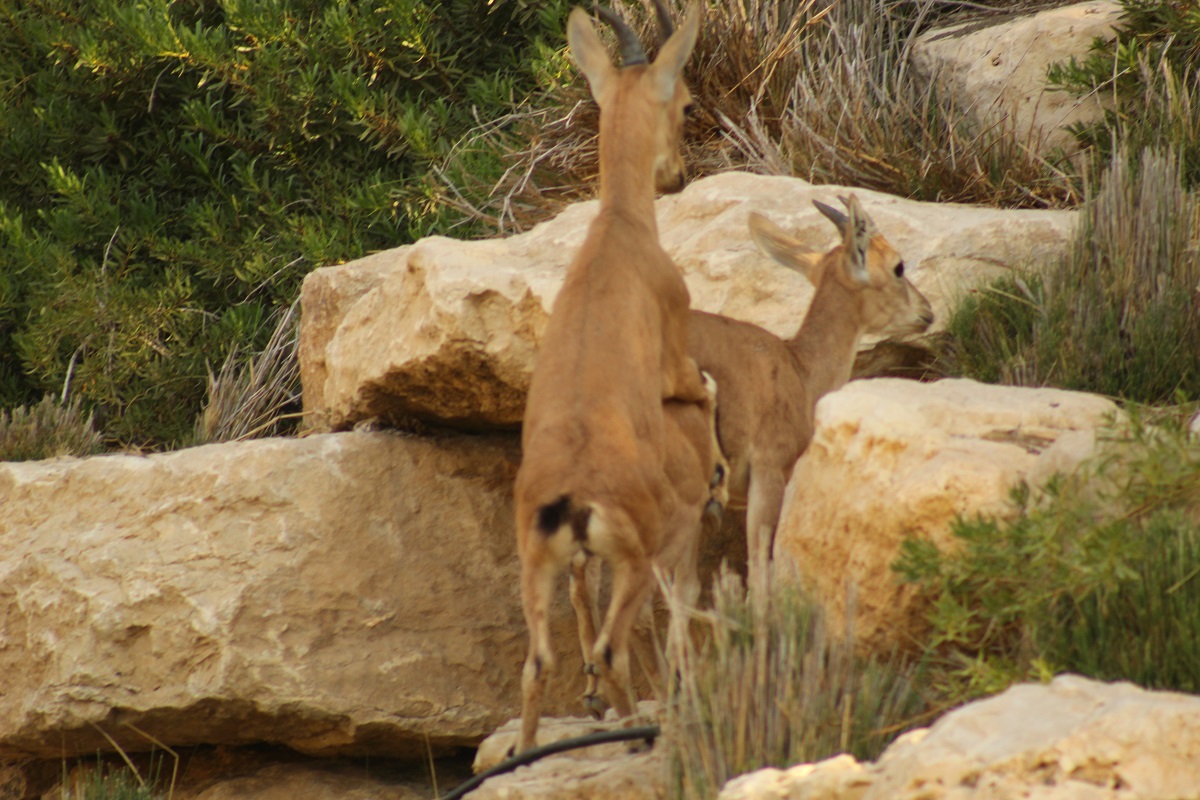 And that’s about all I have been witnessing in the last few days. Maybe the ibex will put on a different show when you come and visit them. They certainly do for me.
And that’s about all I have been witnessing in the last few days. Maybe the ibex will put on a different show when you come and visit them. They certainly do for me.
This post is also available in:
 Français
Français
Author: Marion Krivine
French owner of Krivine Guesthouse in Midreshet Ben Gurion, together with my British husband John. A little piece of european greenery in the heart of the Negev Highlands, Israel. I have set out on this journey in order to provide our guests with the most accurate, up-to-date and comprehensive guide of the area. View all posts by Marion Krivine

